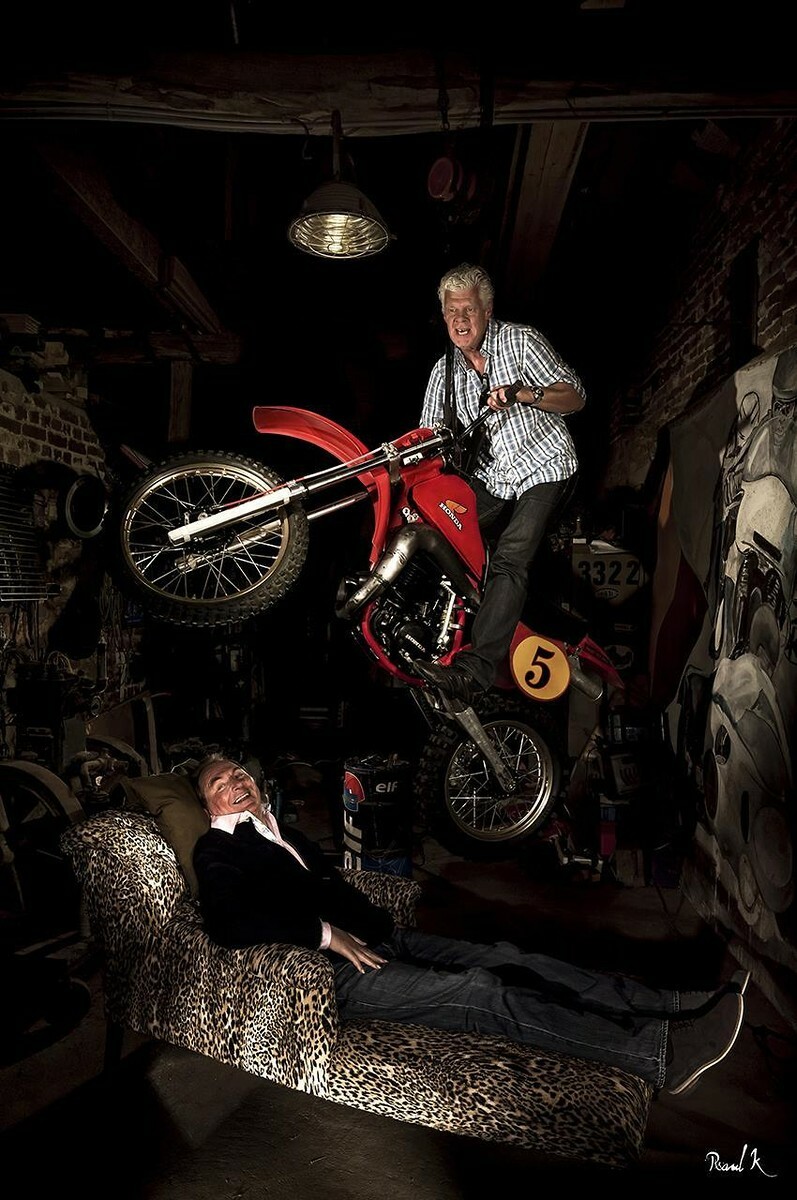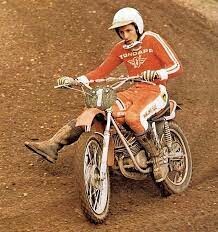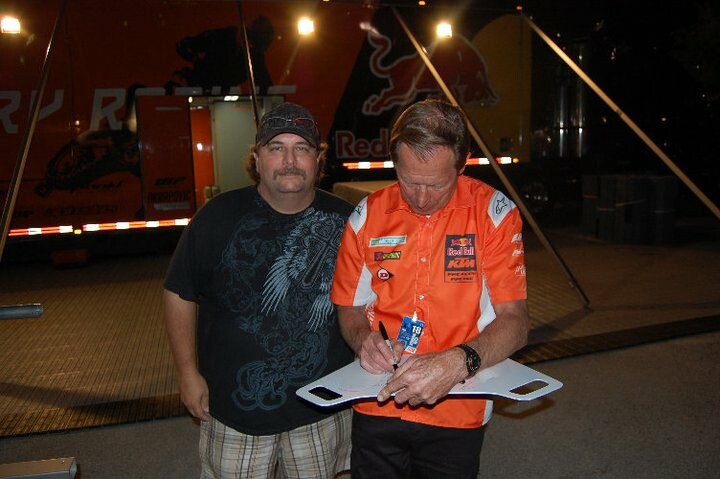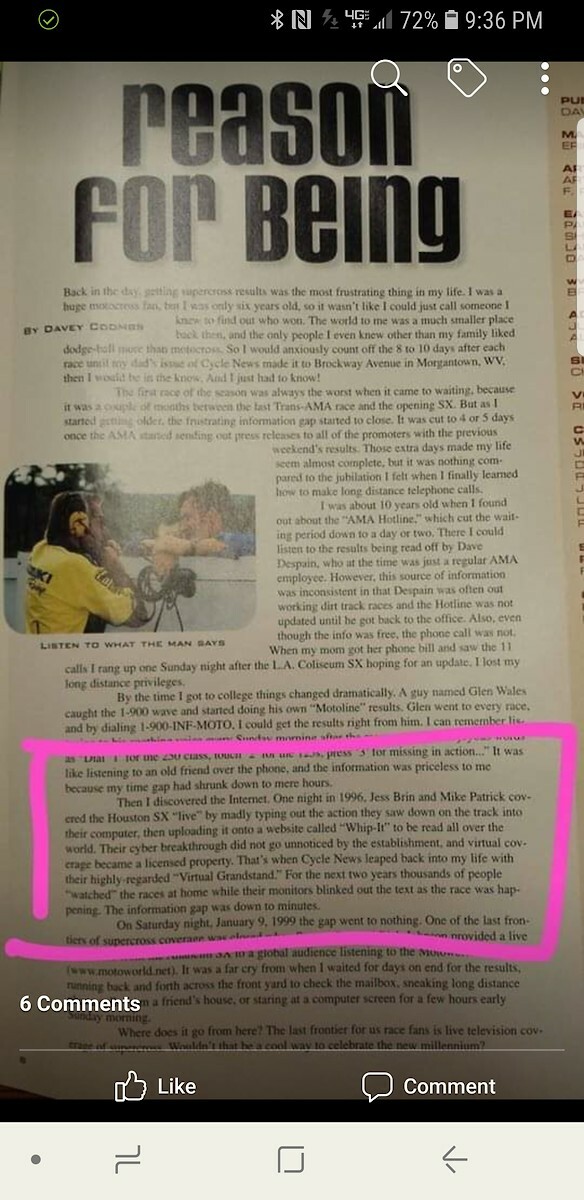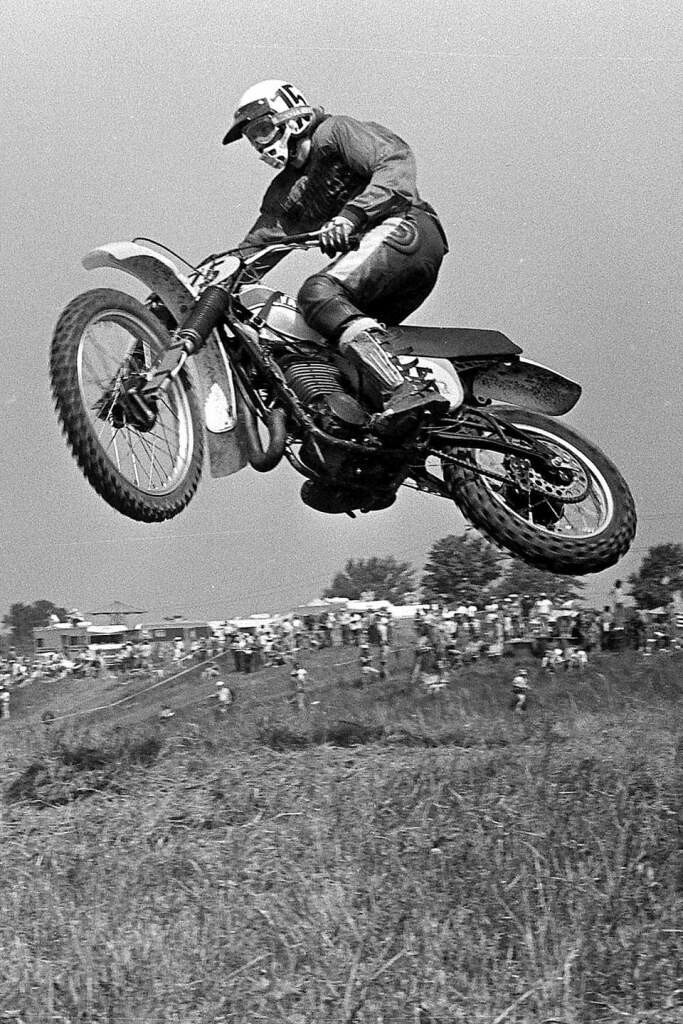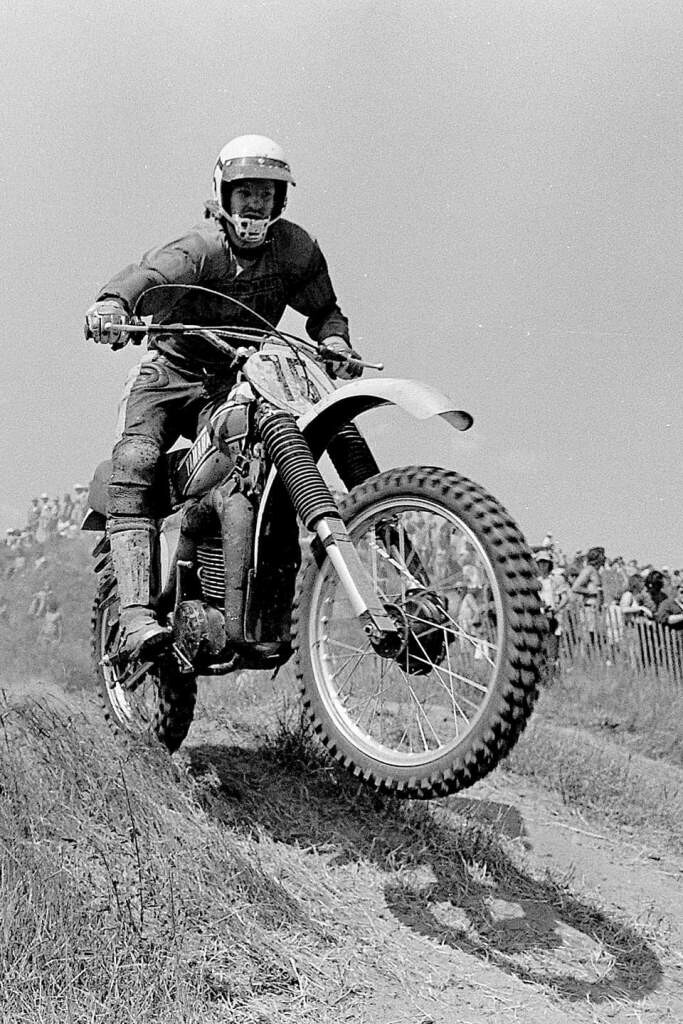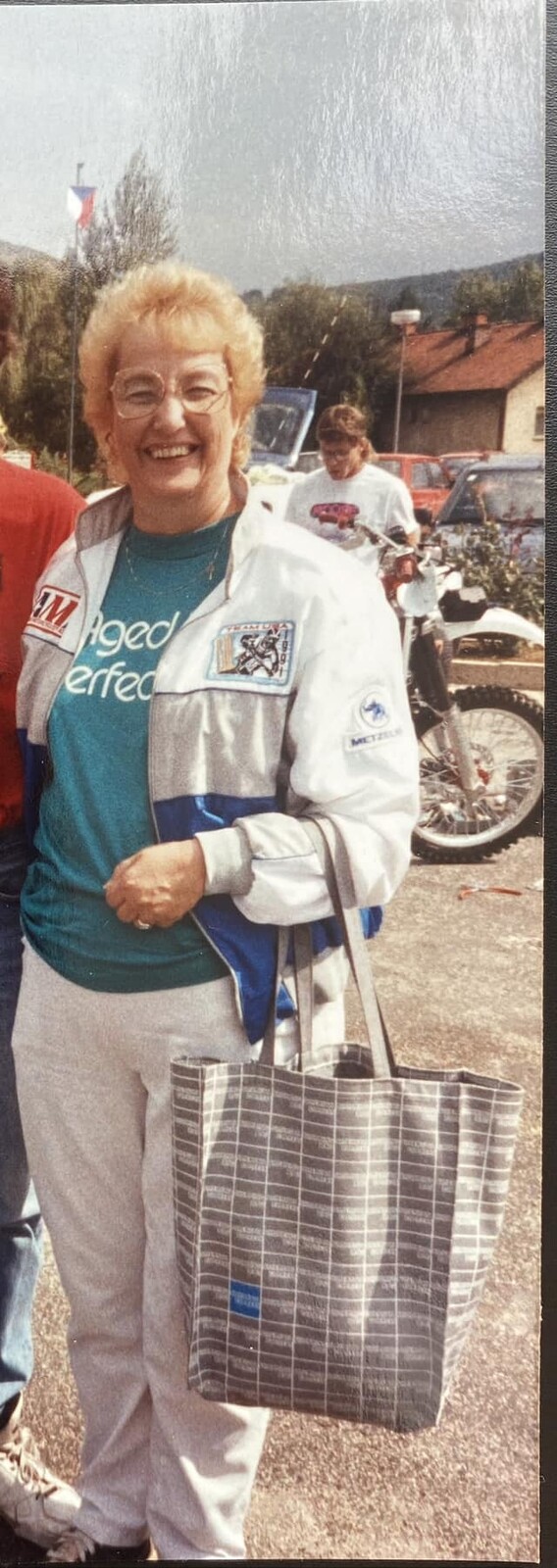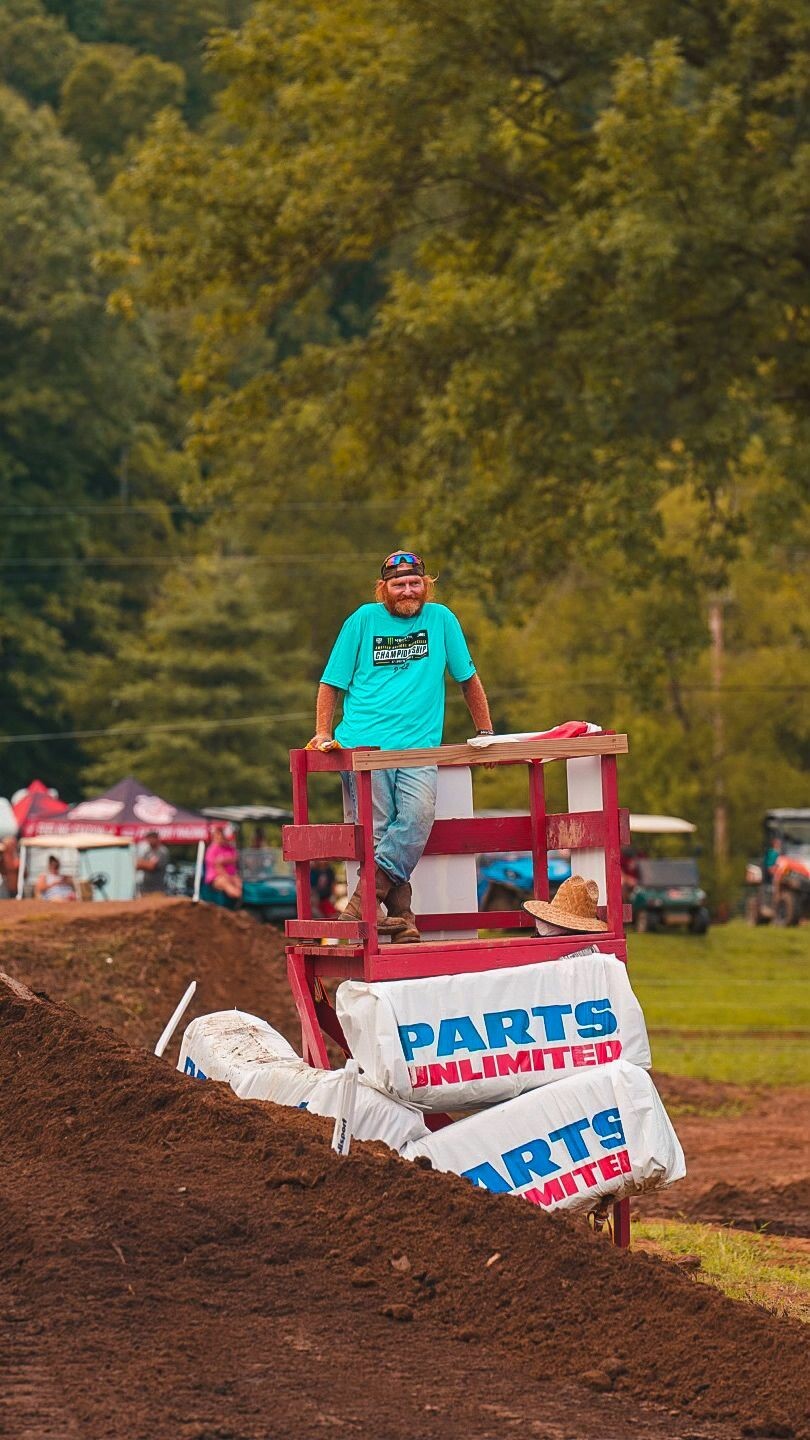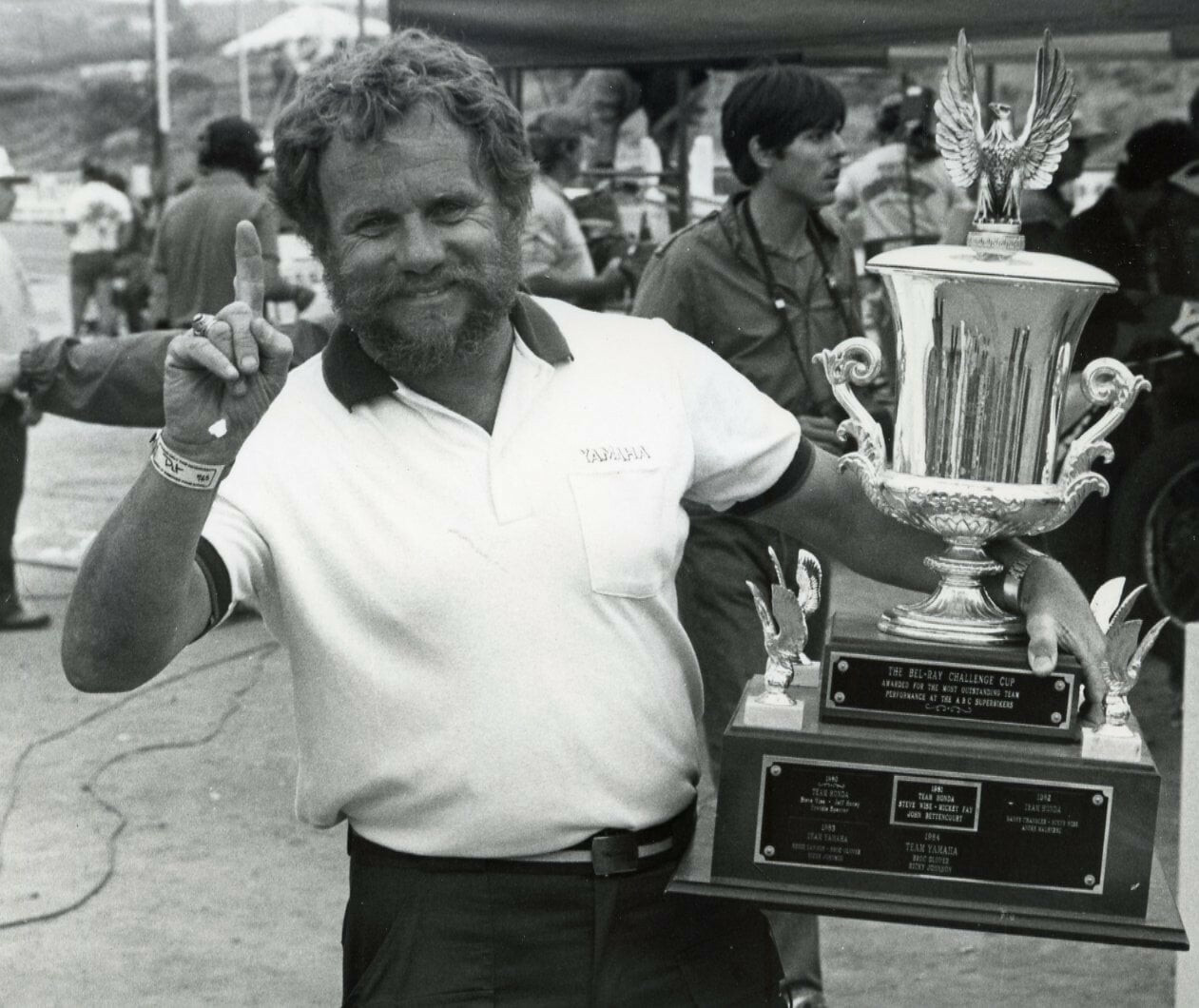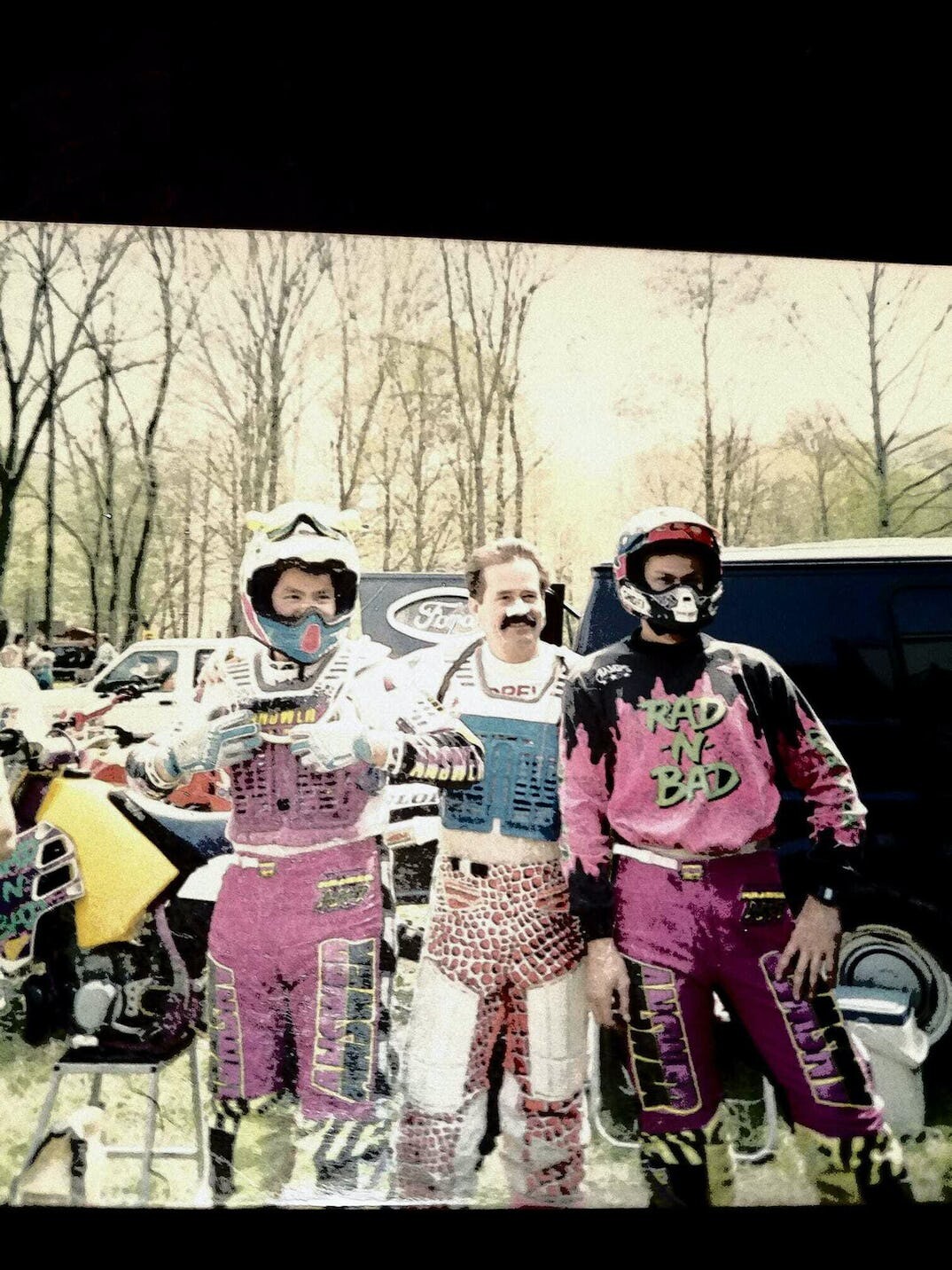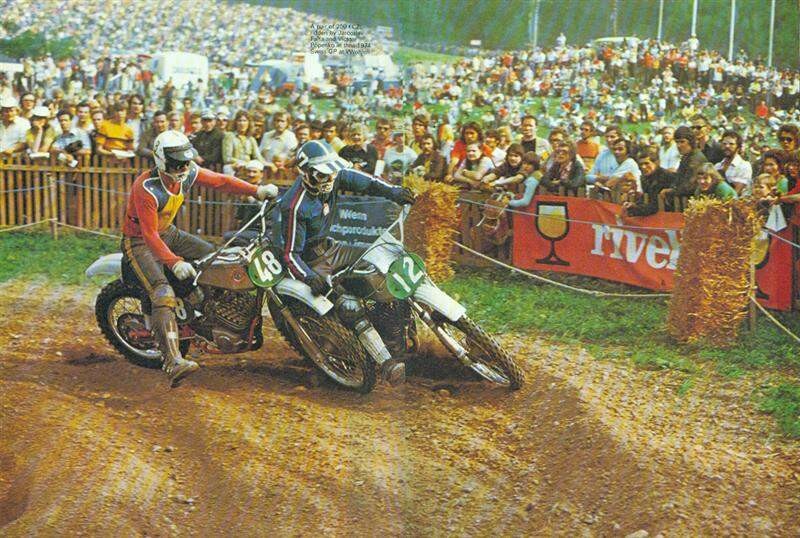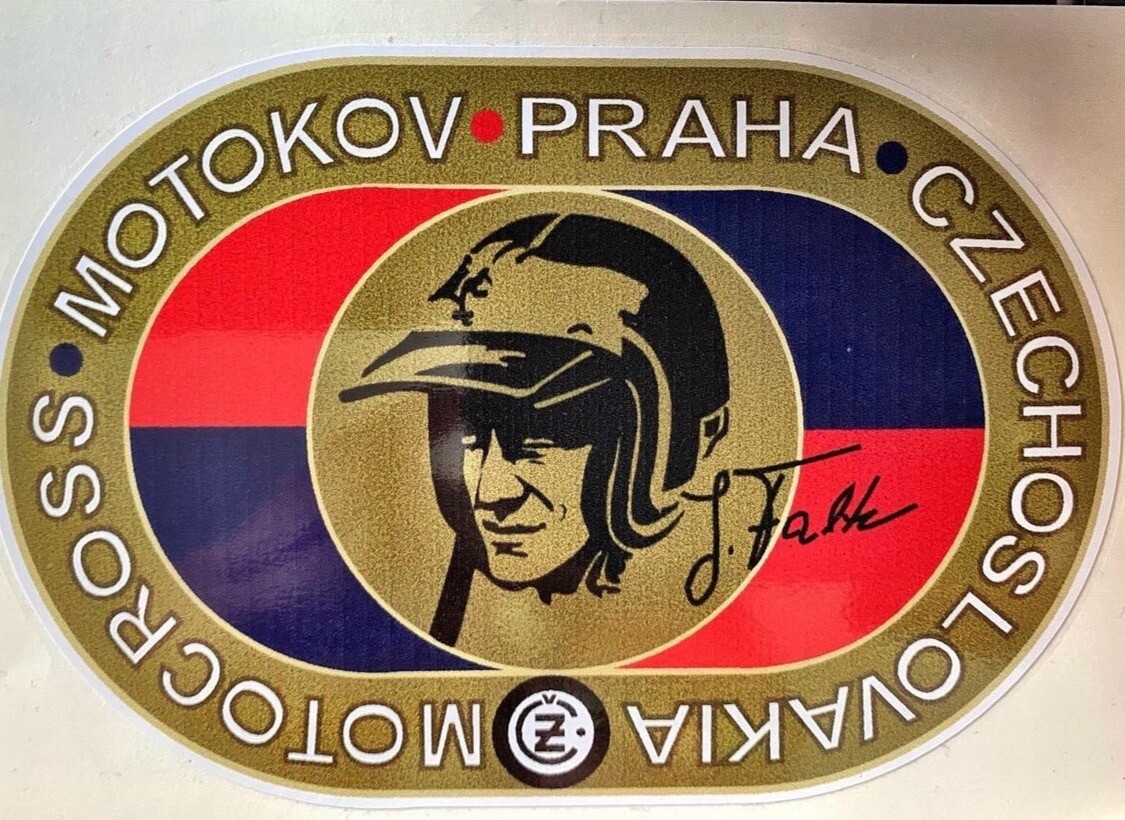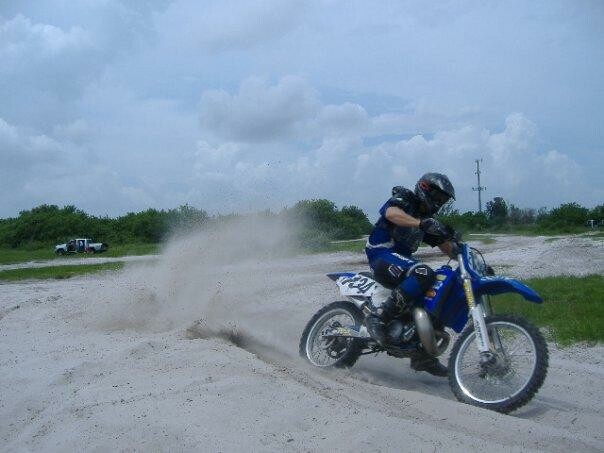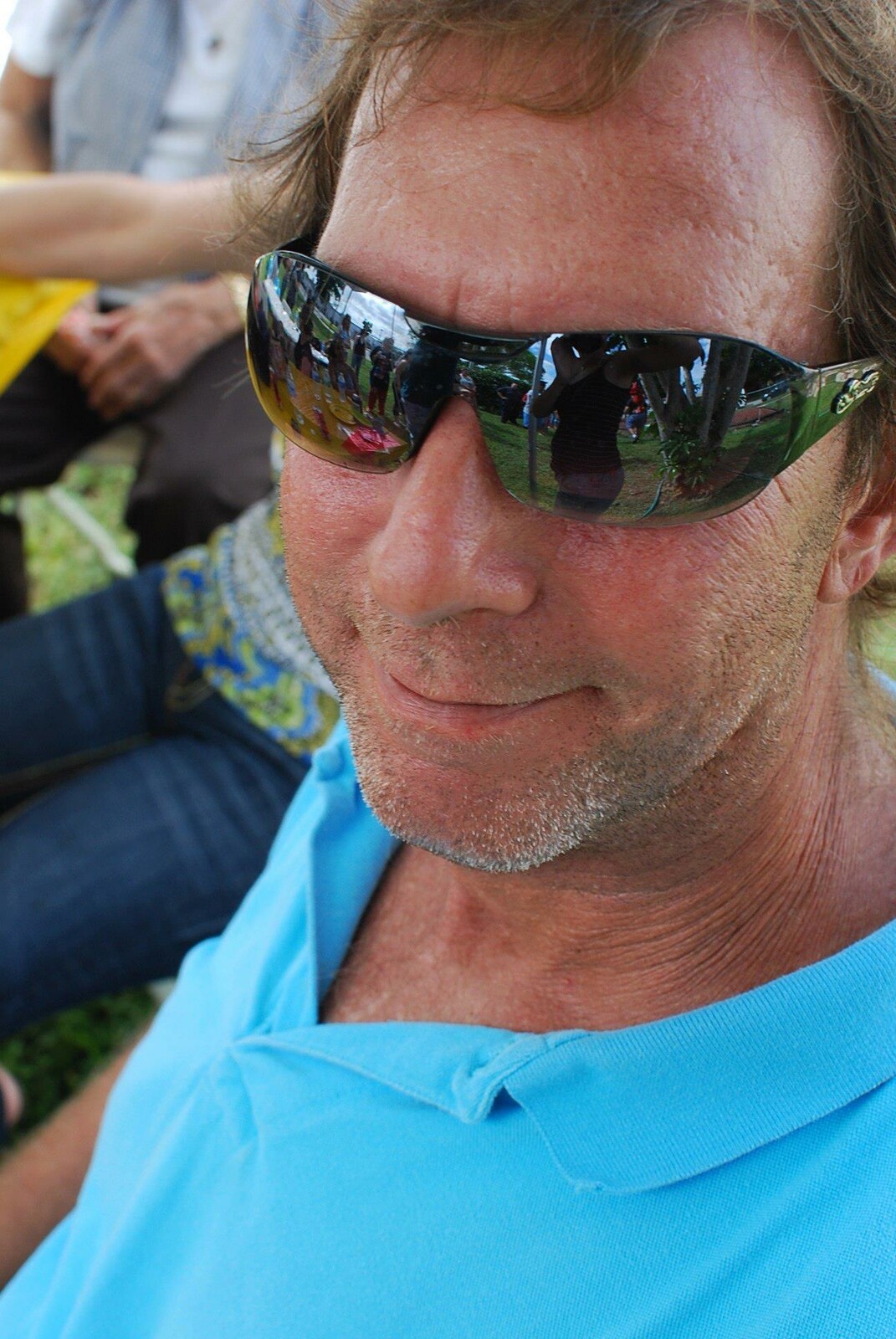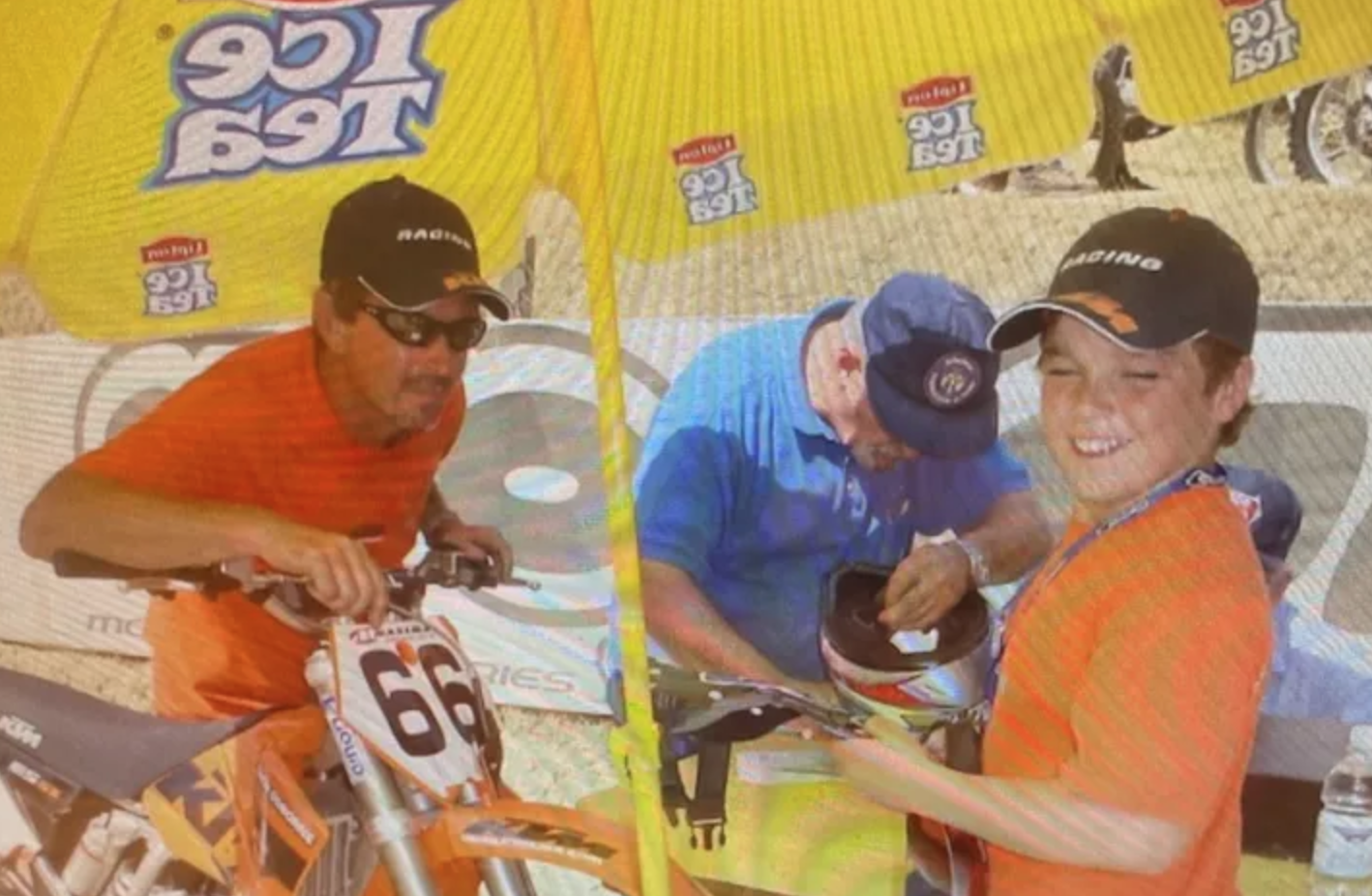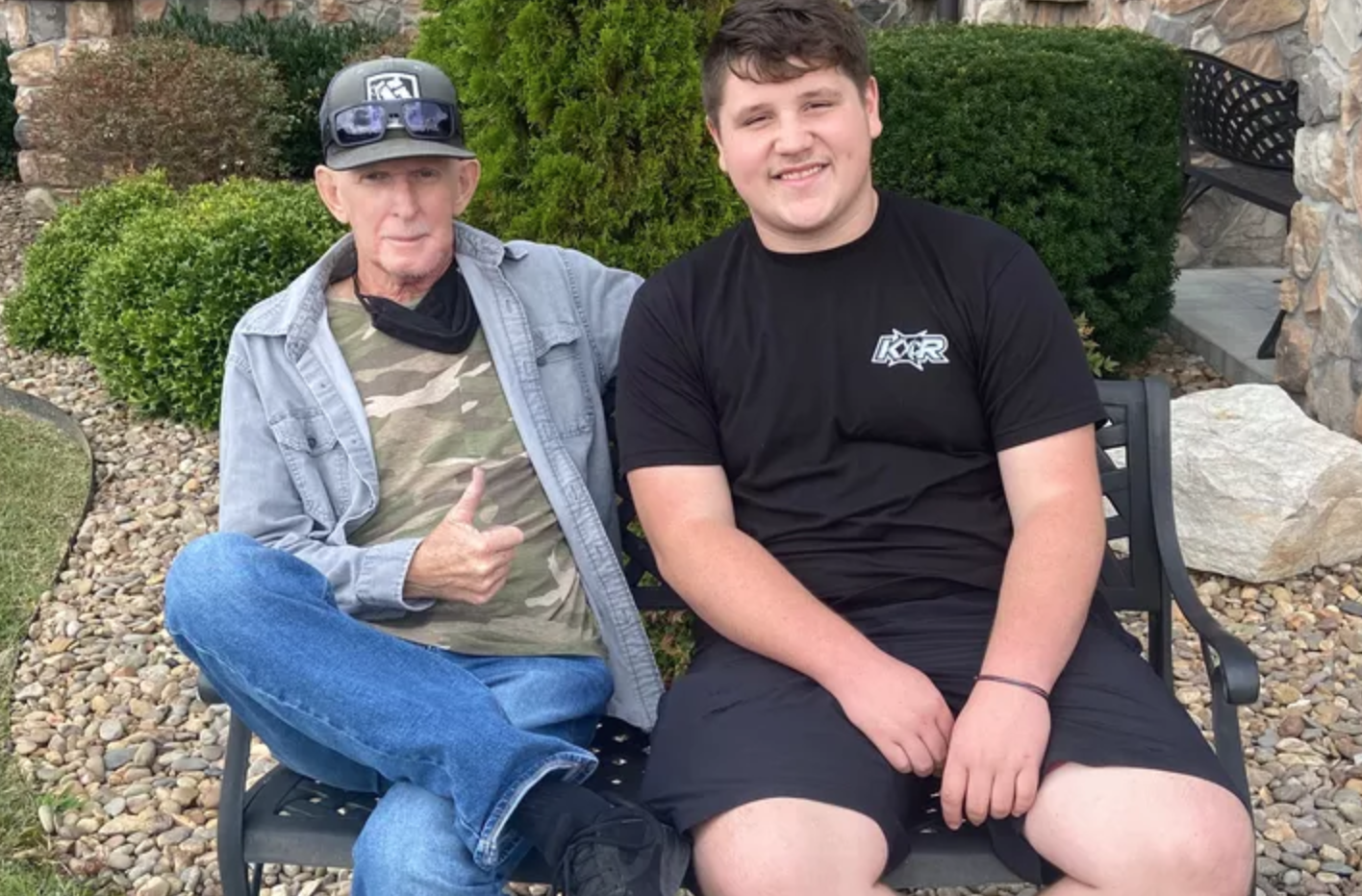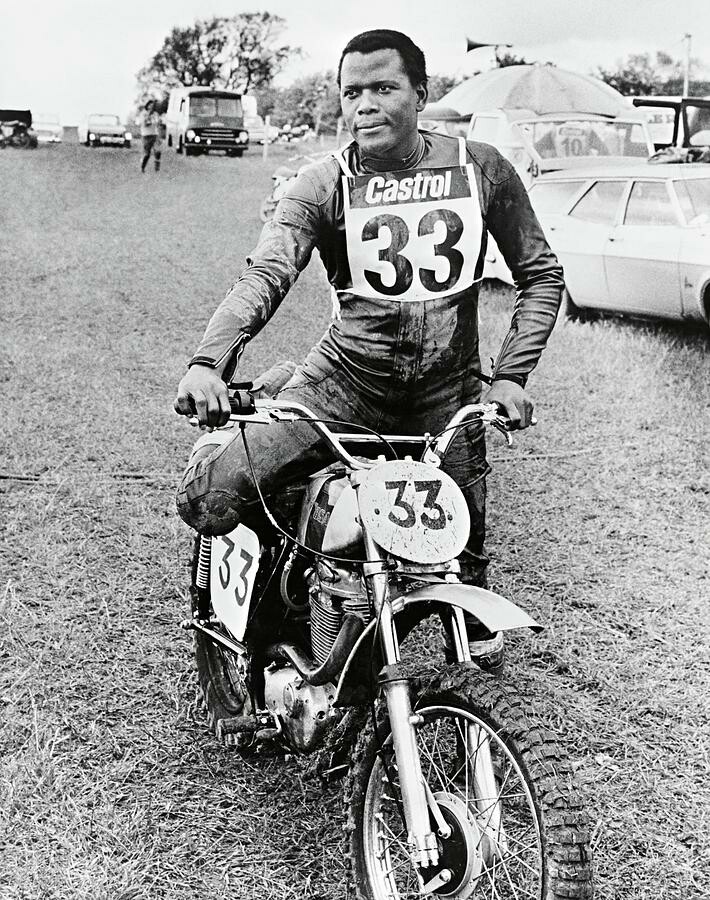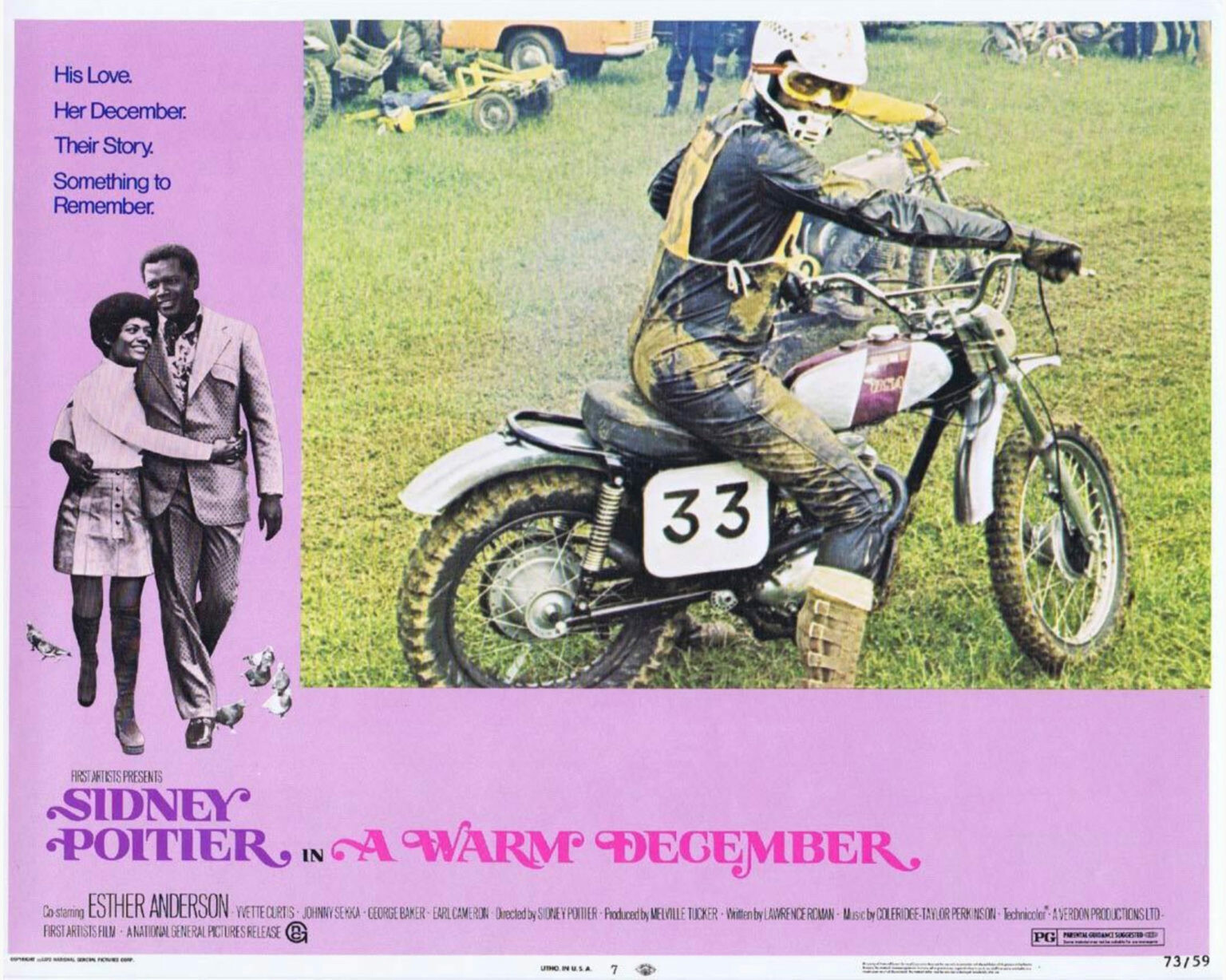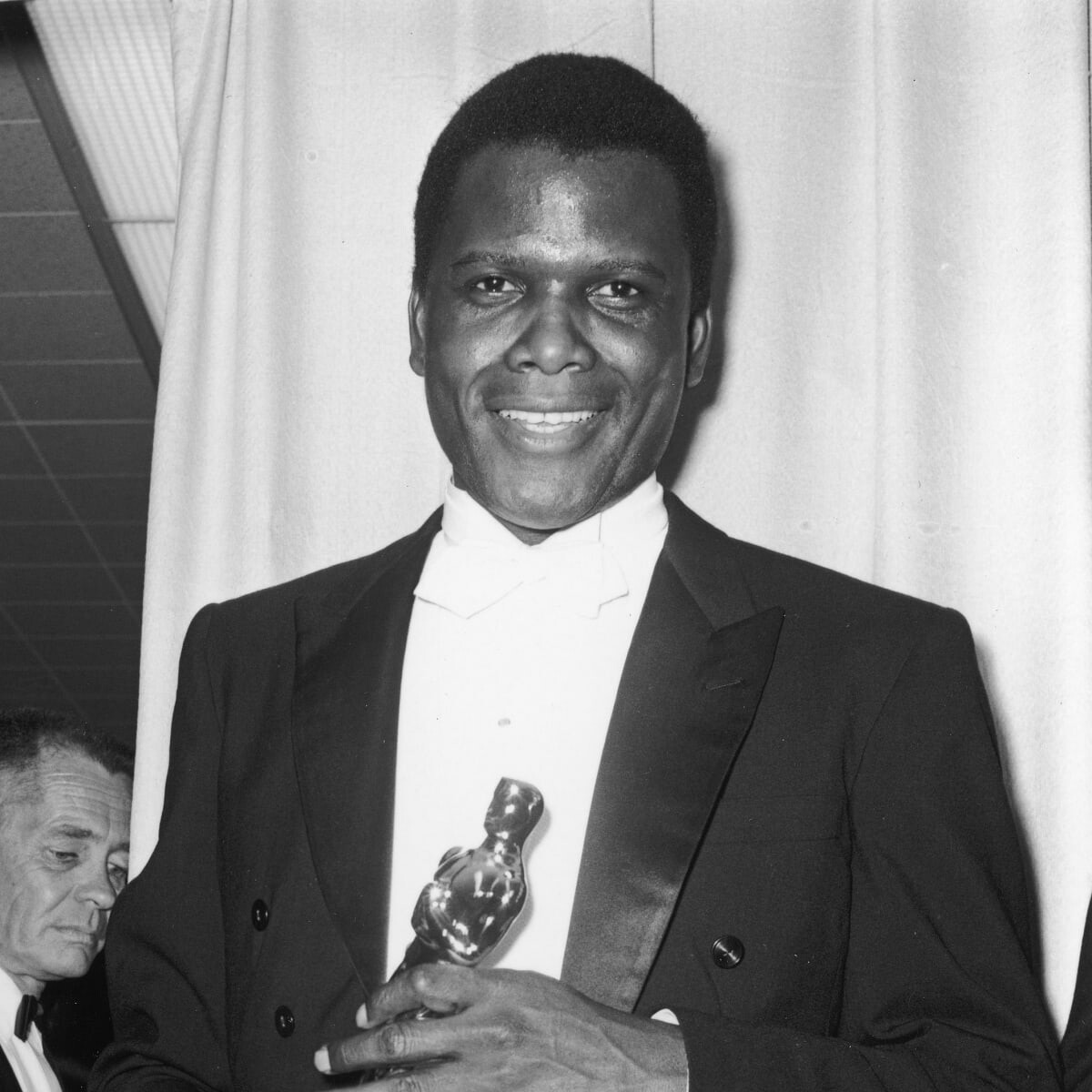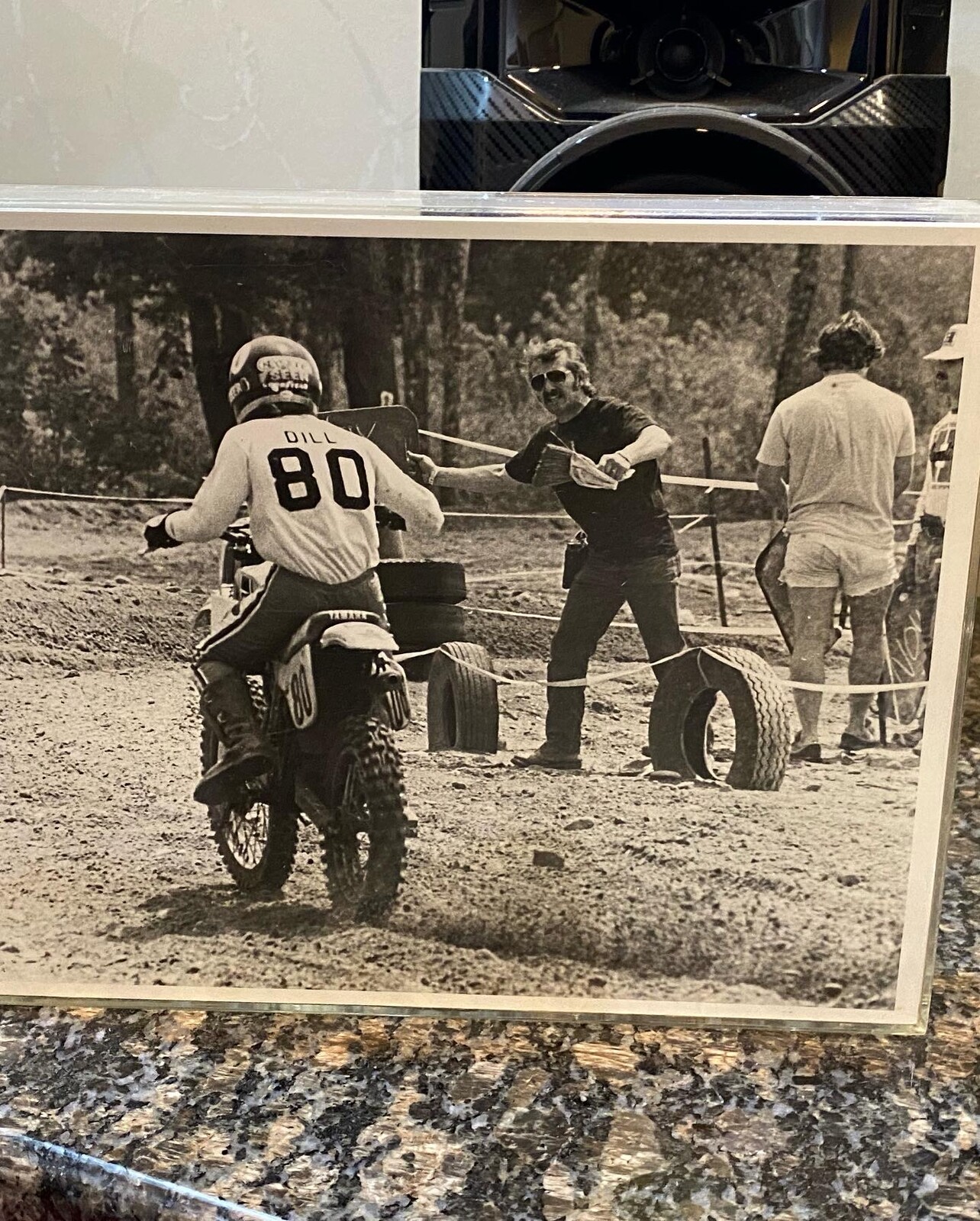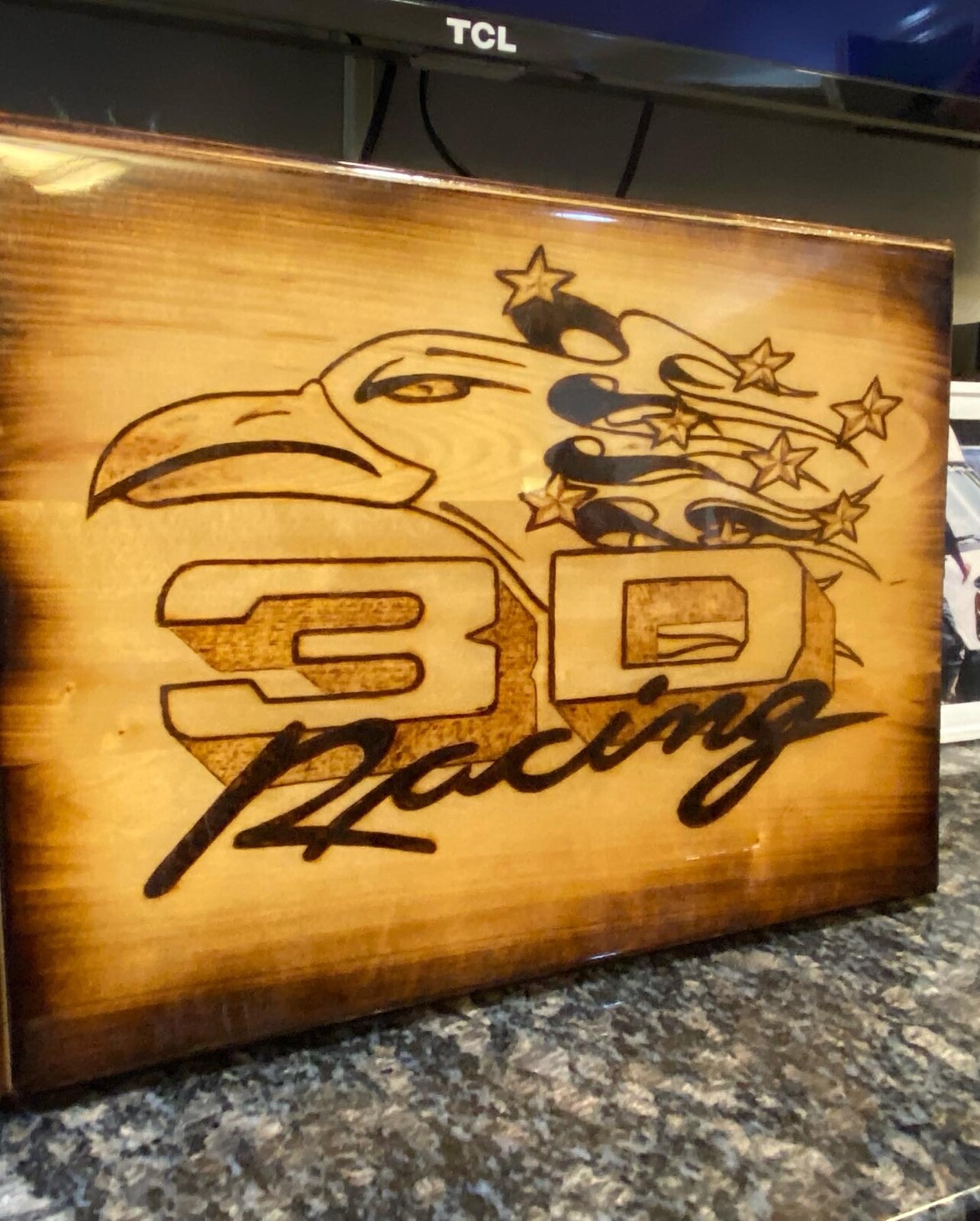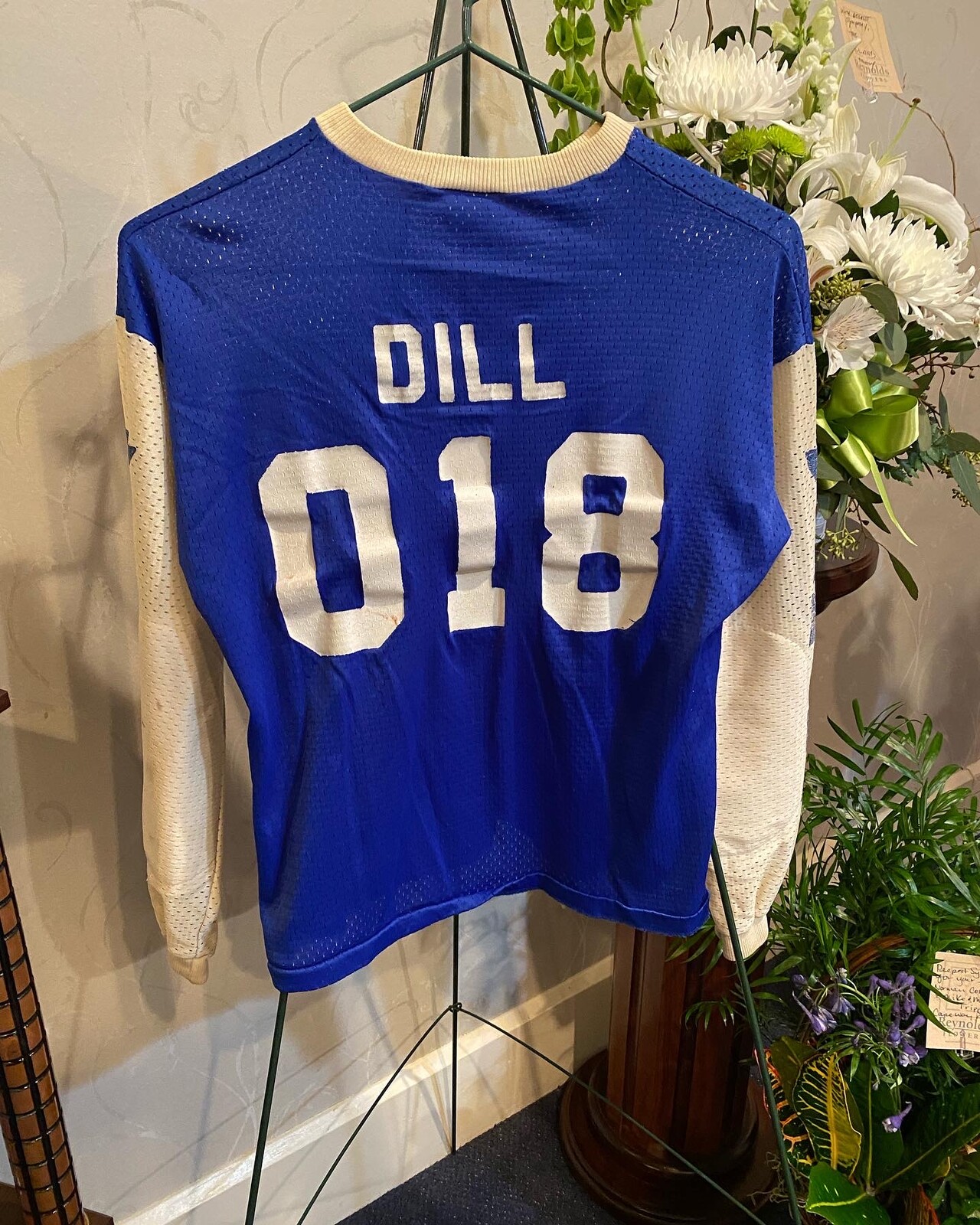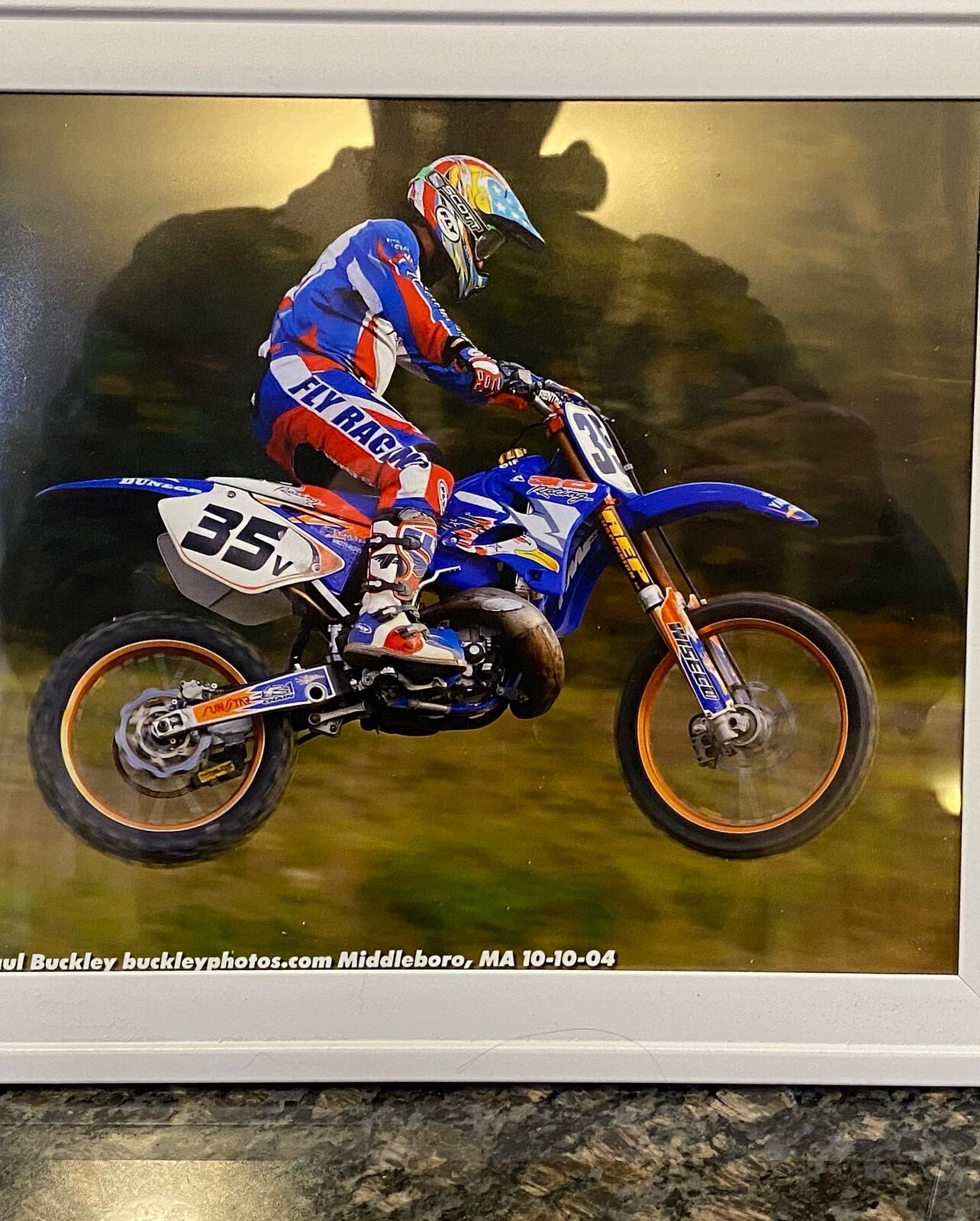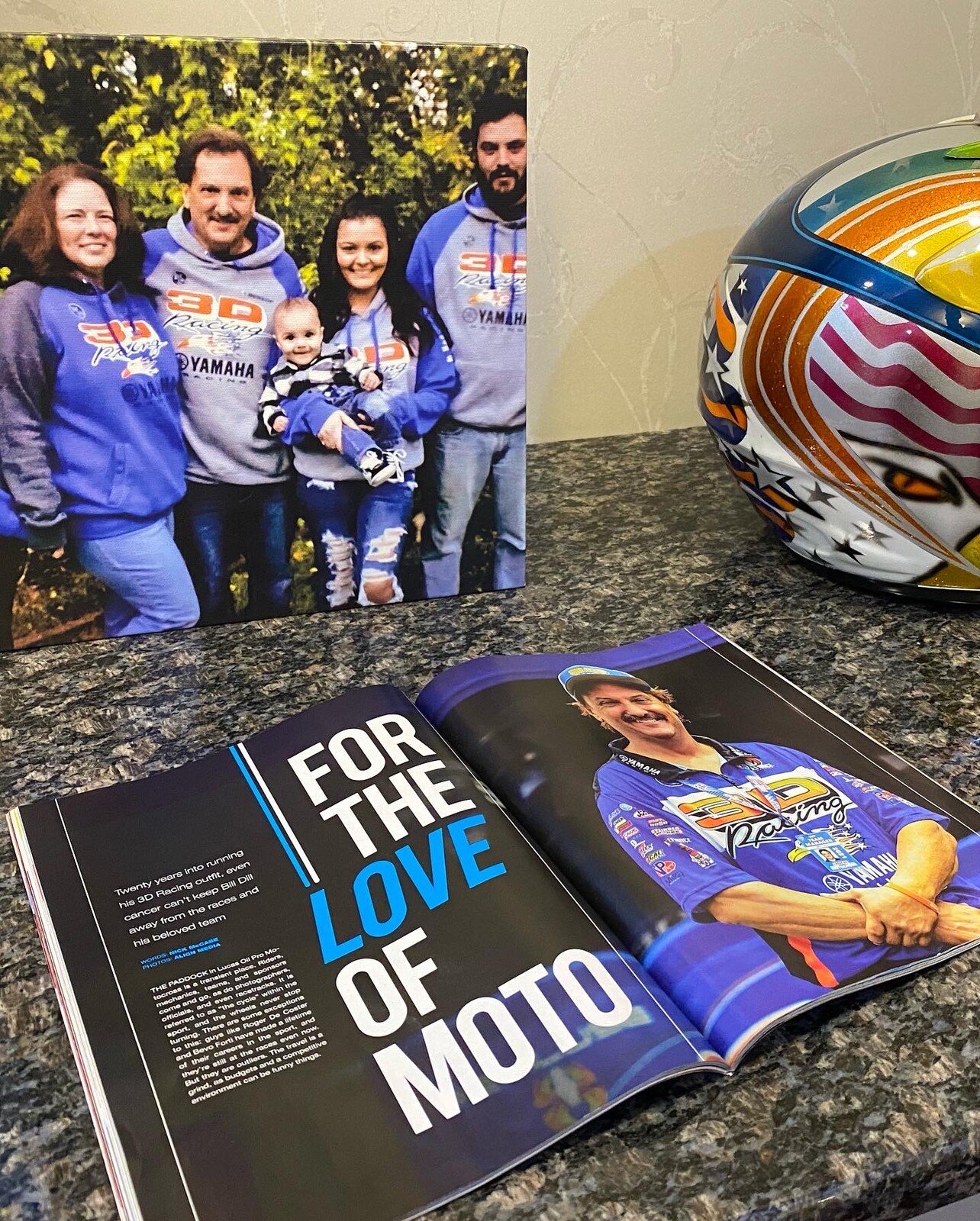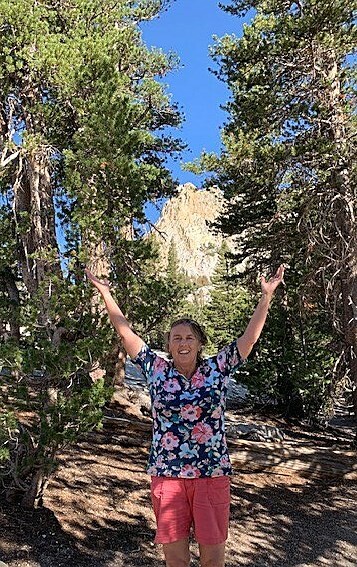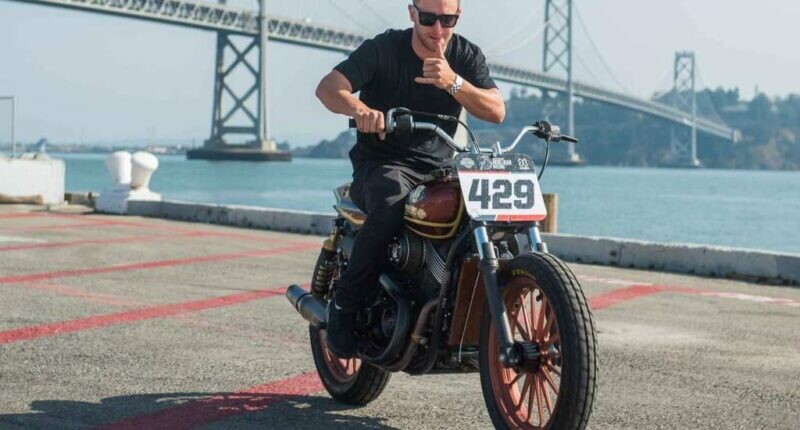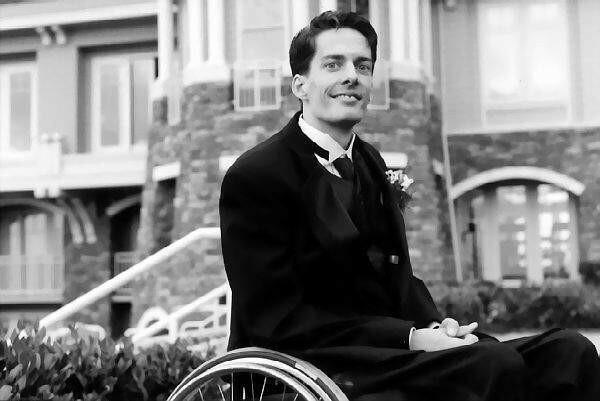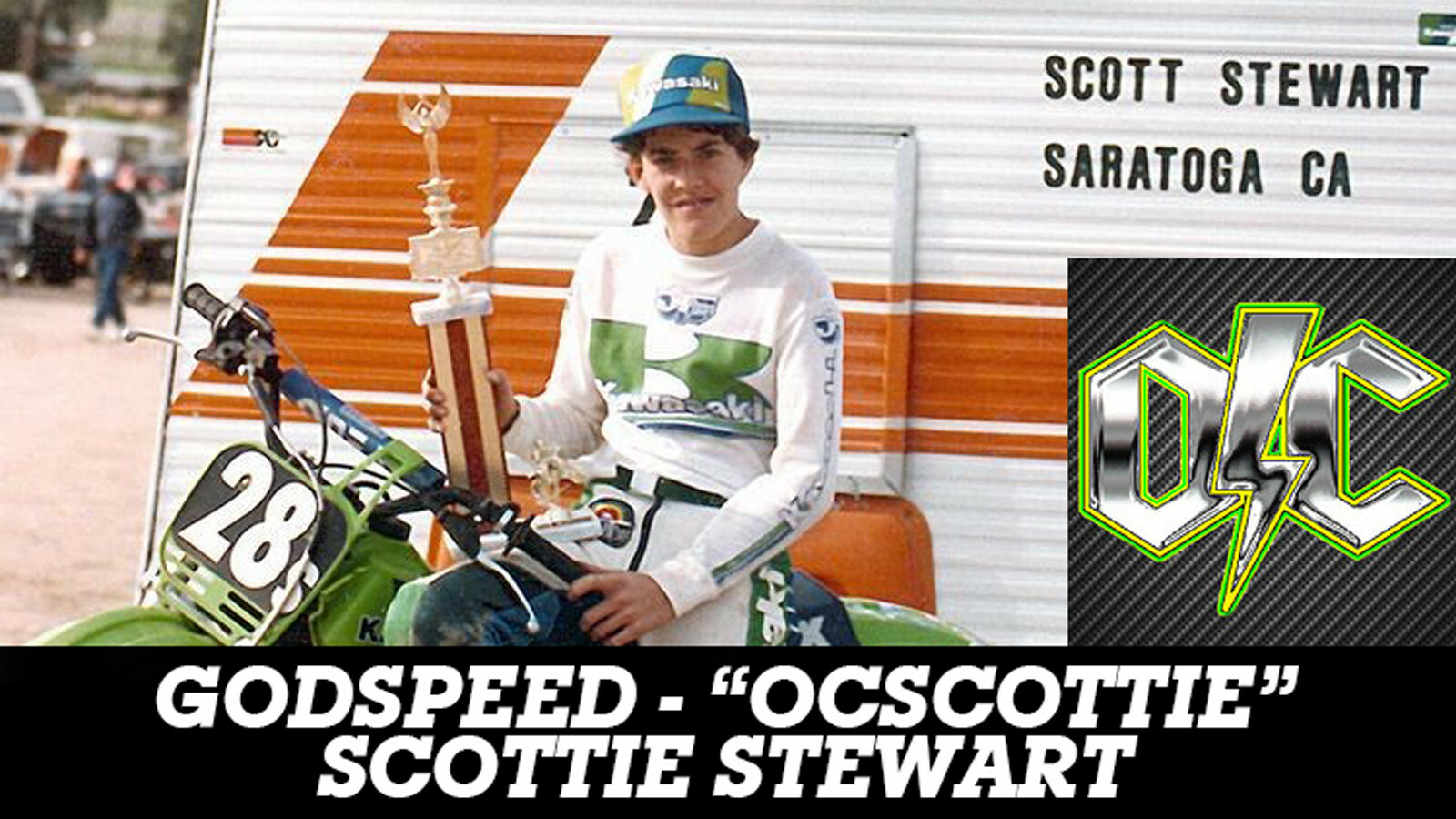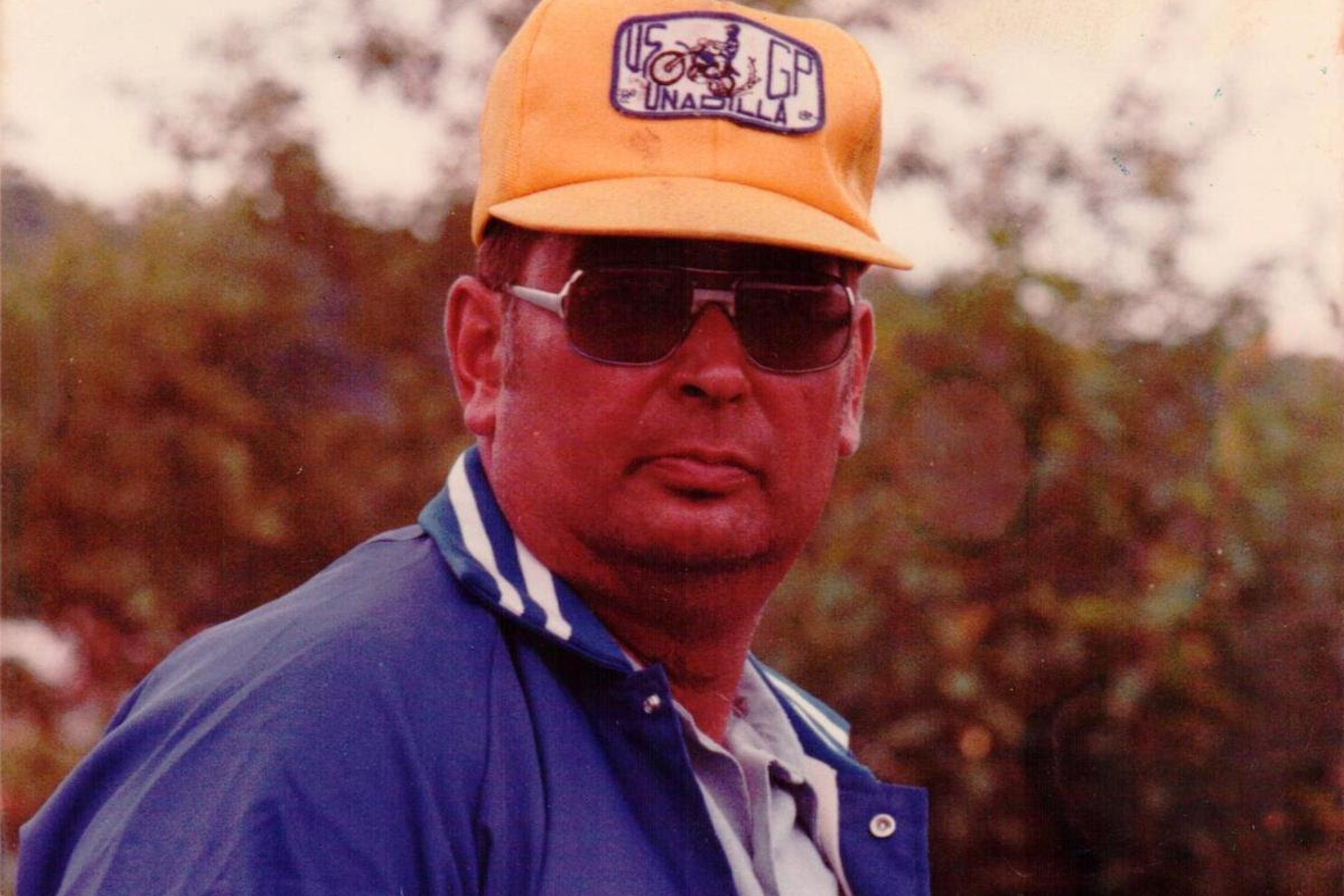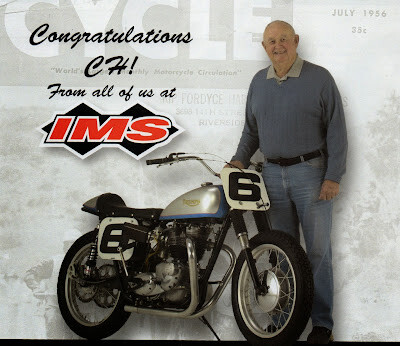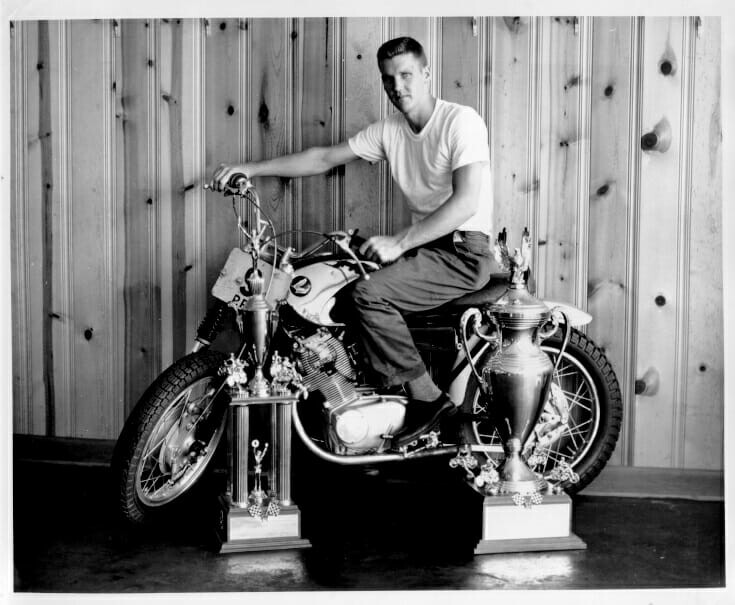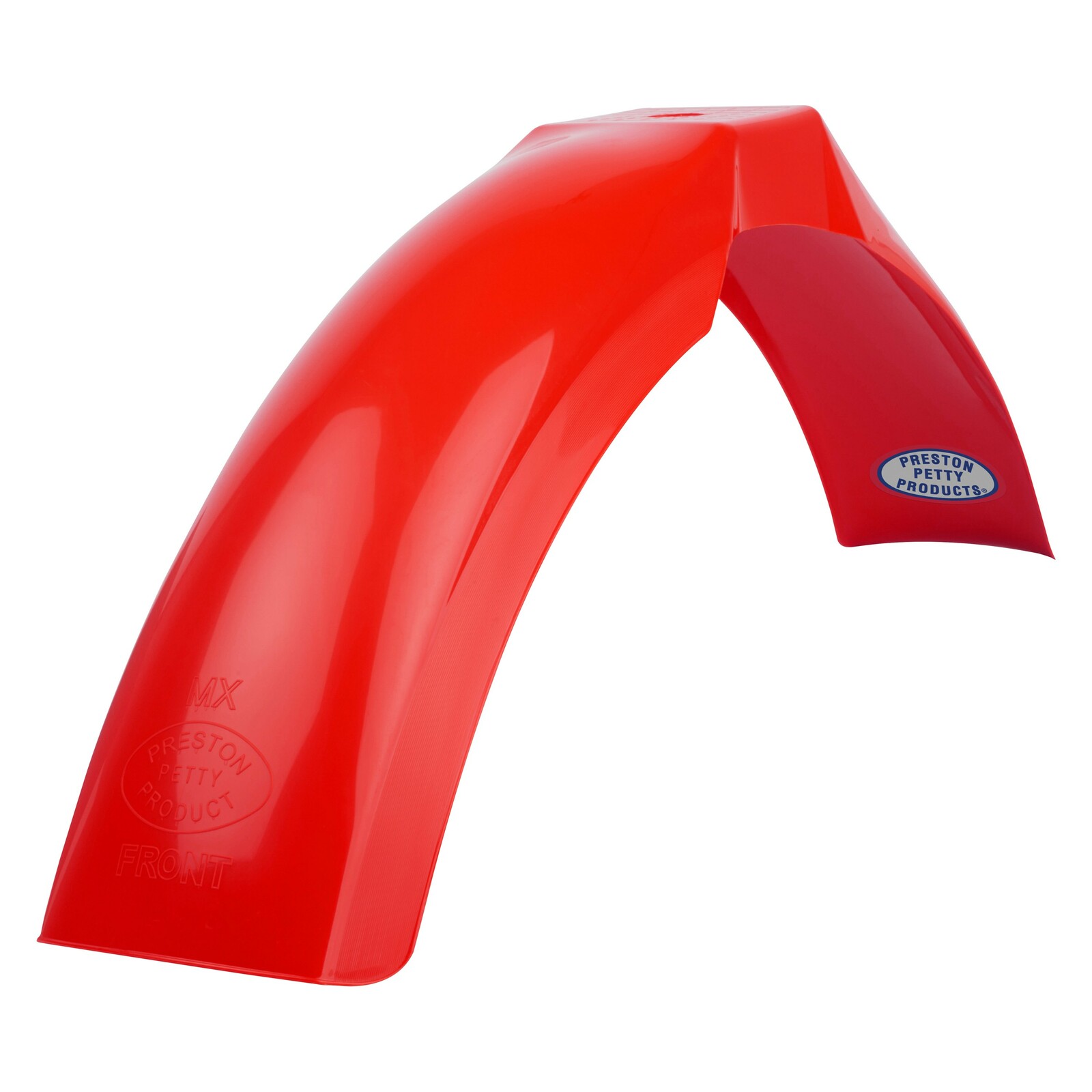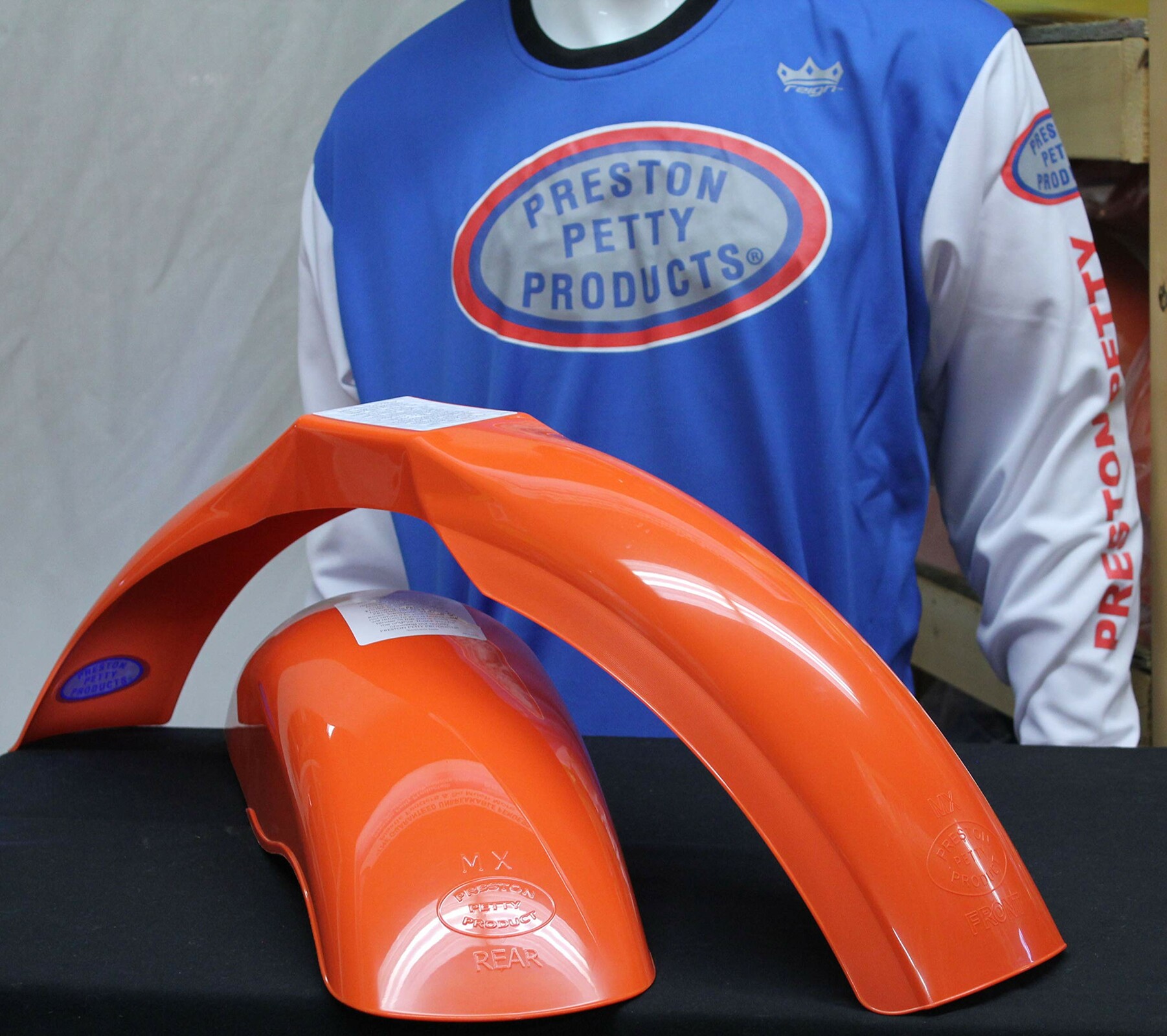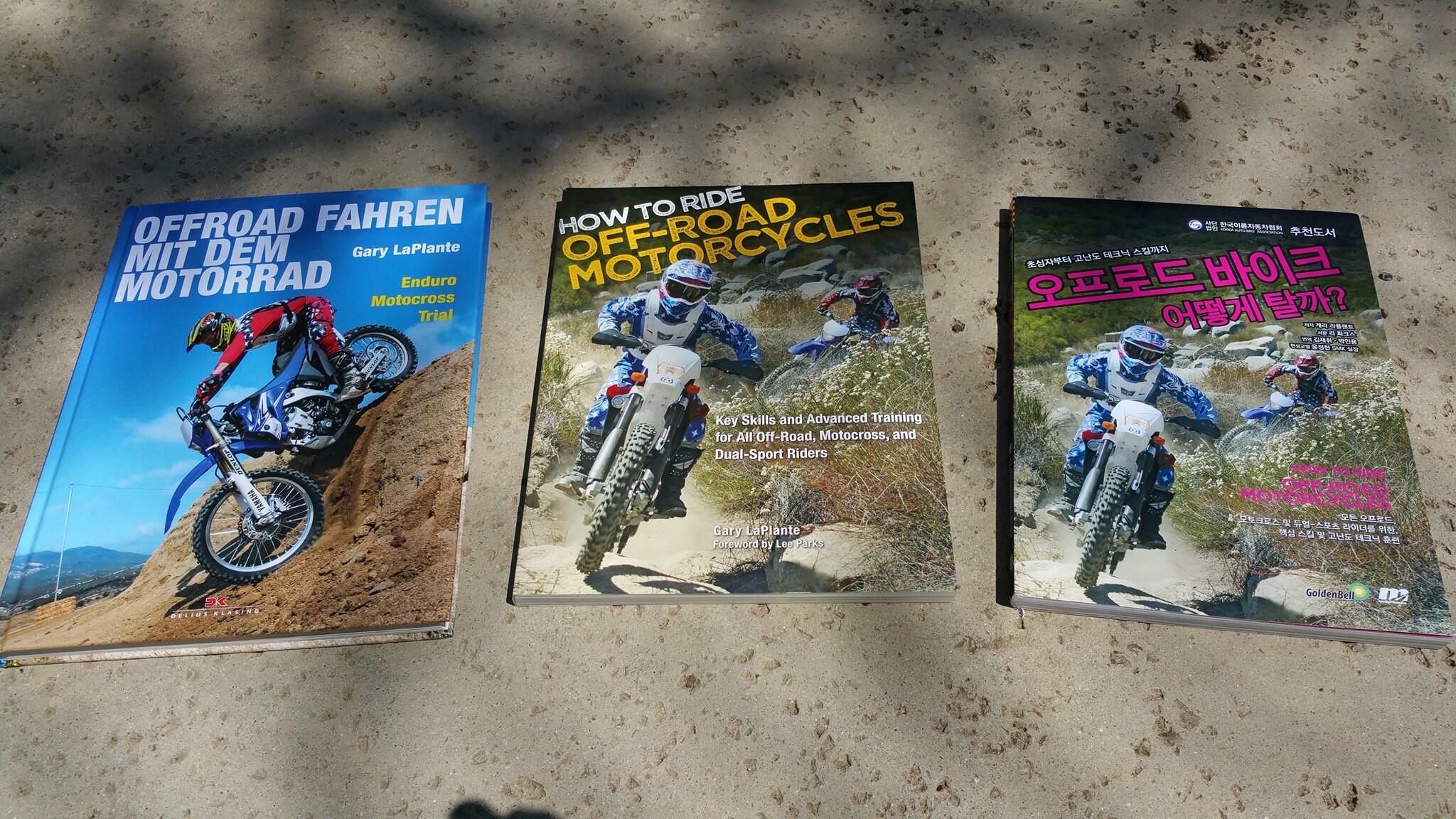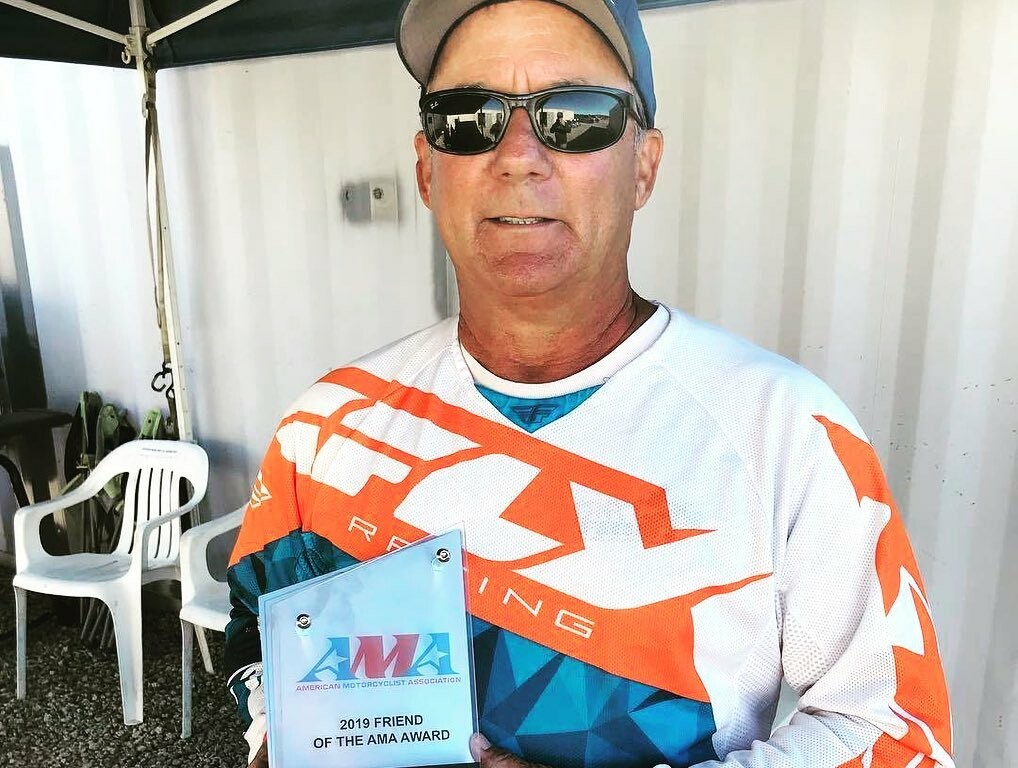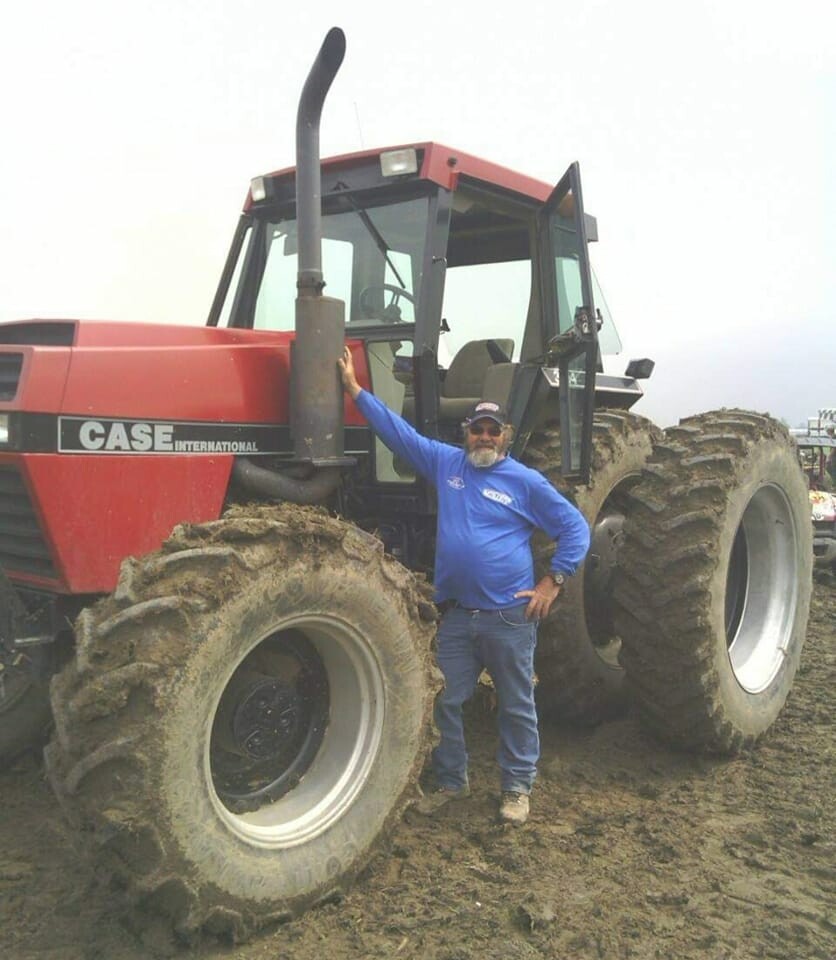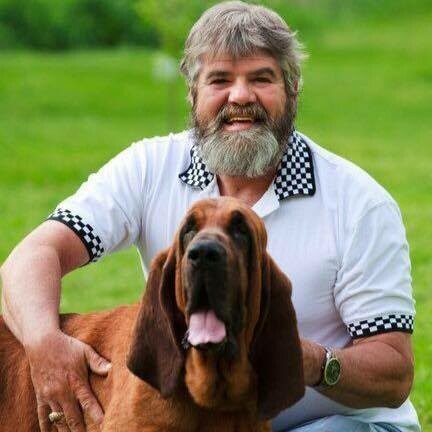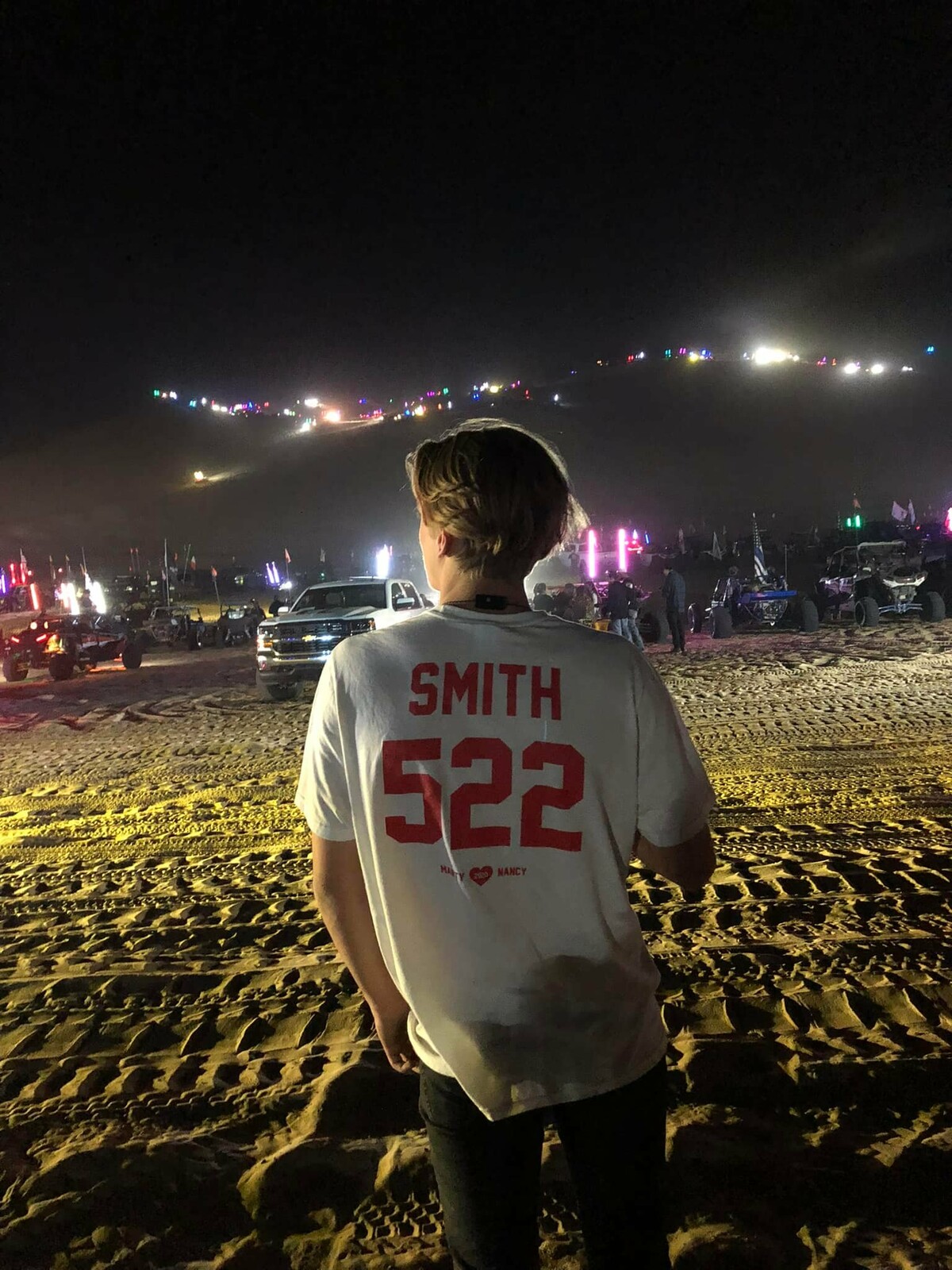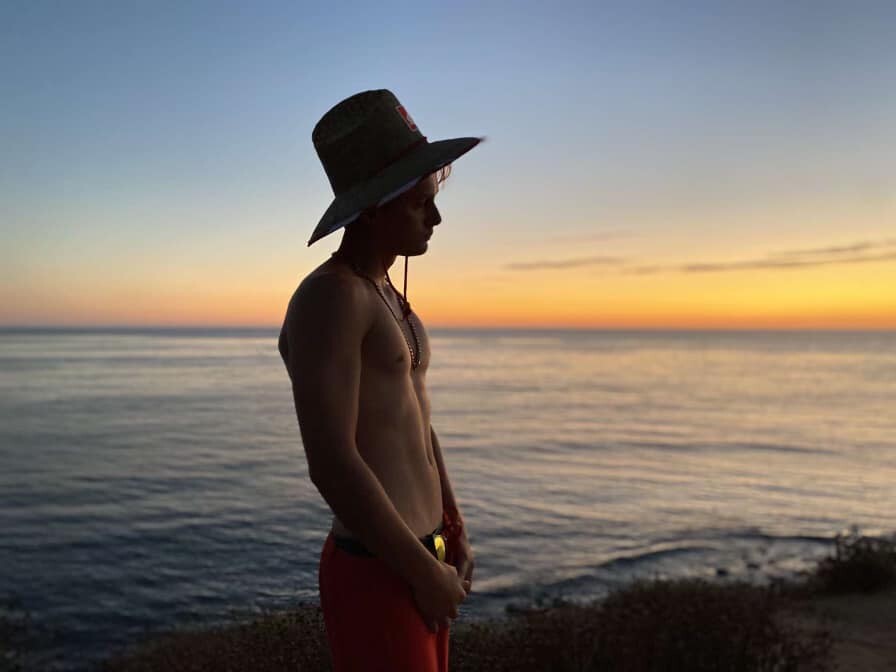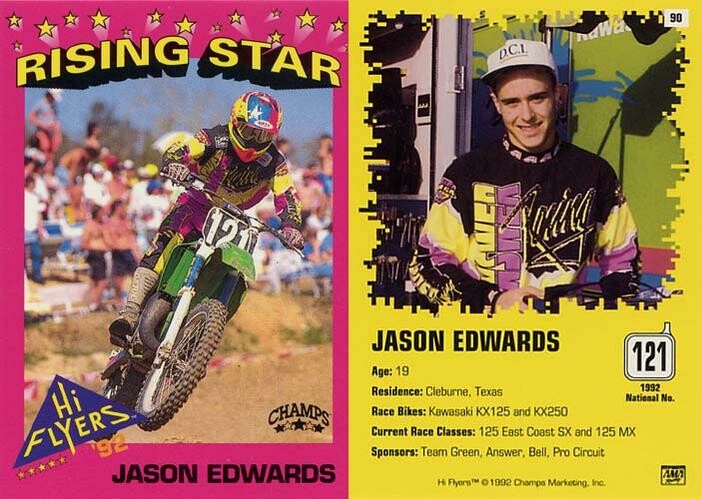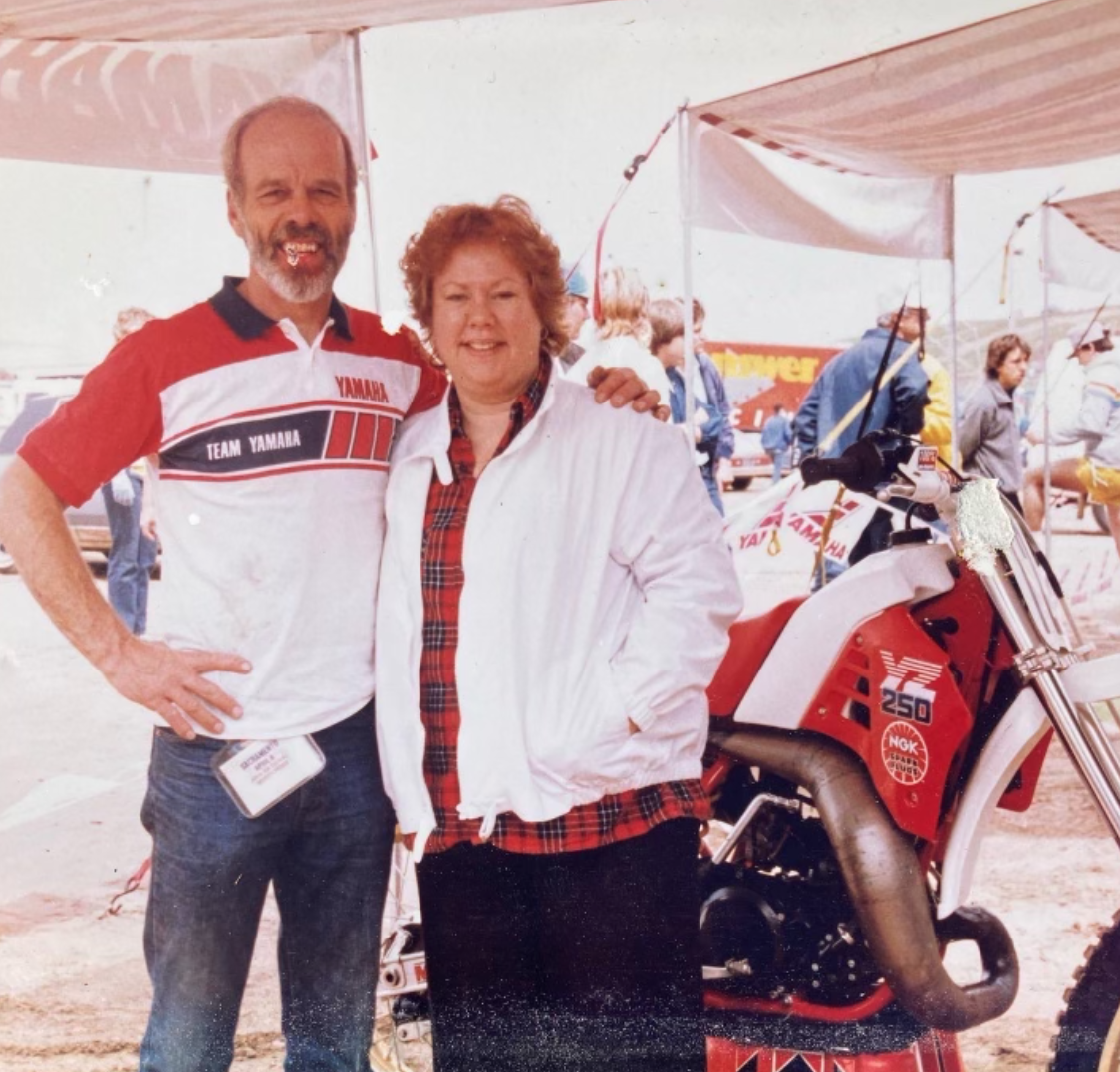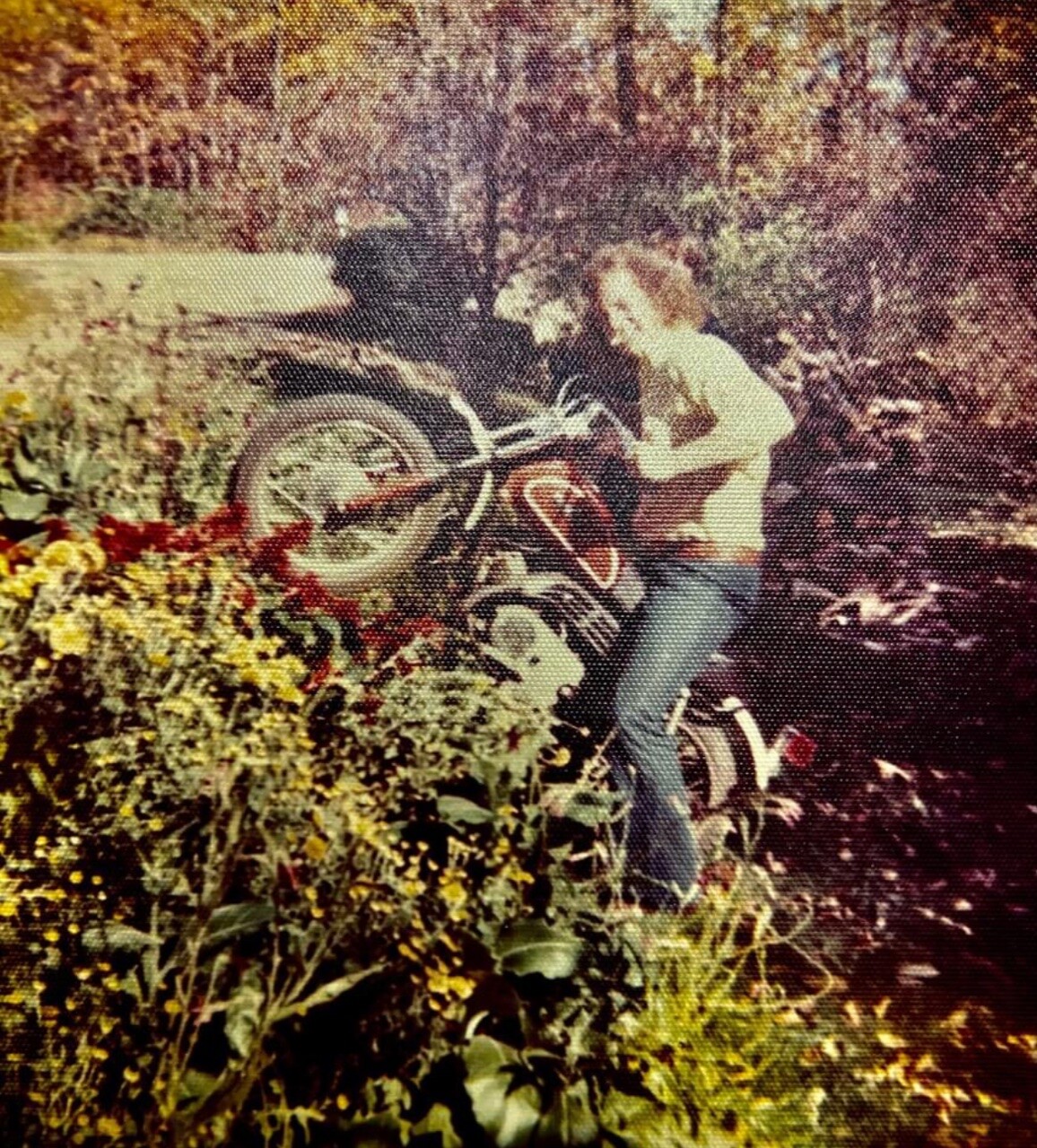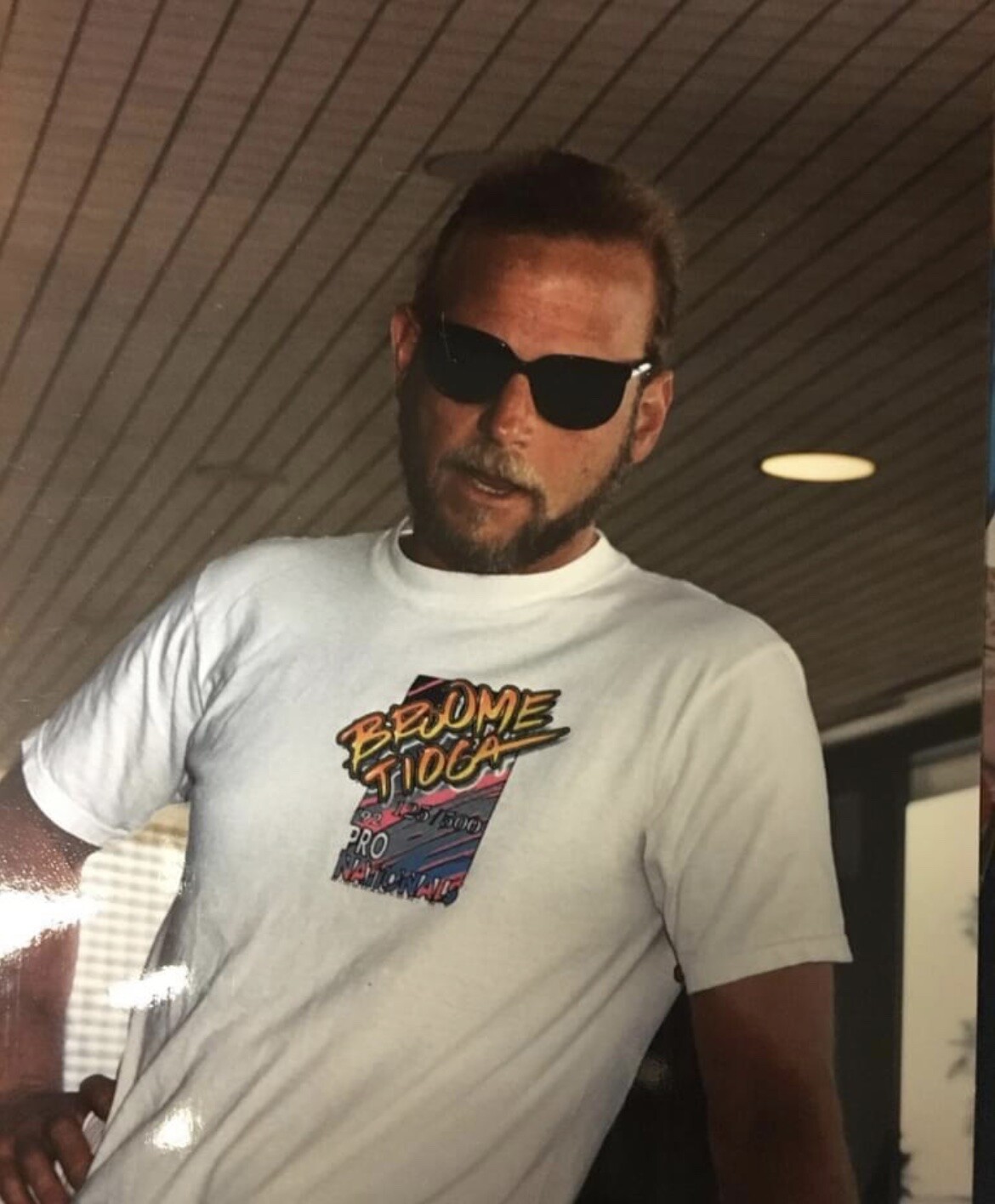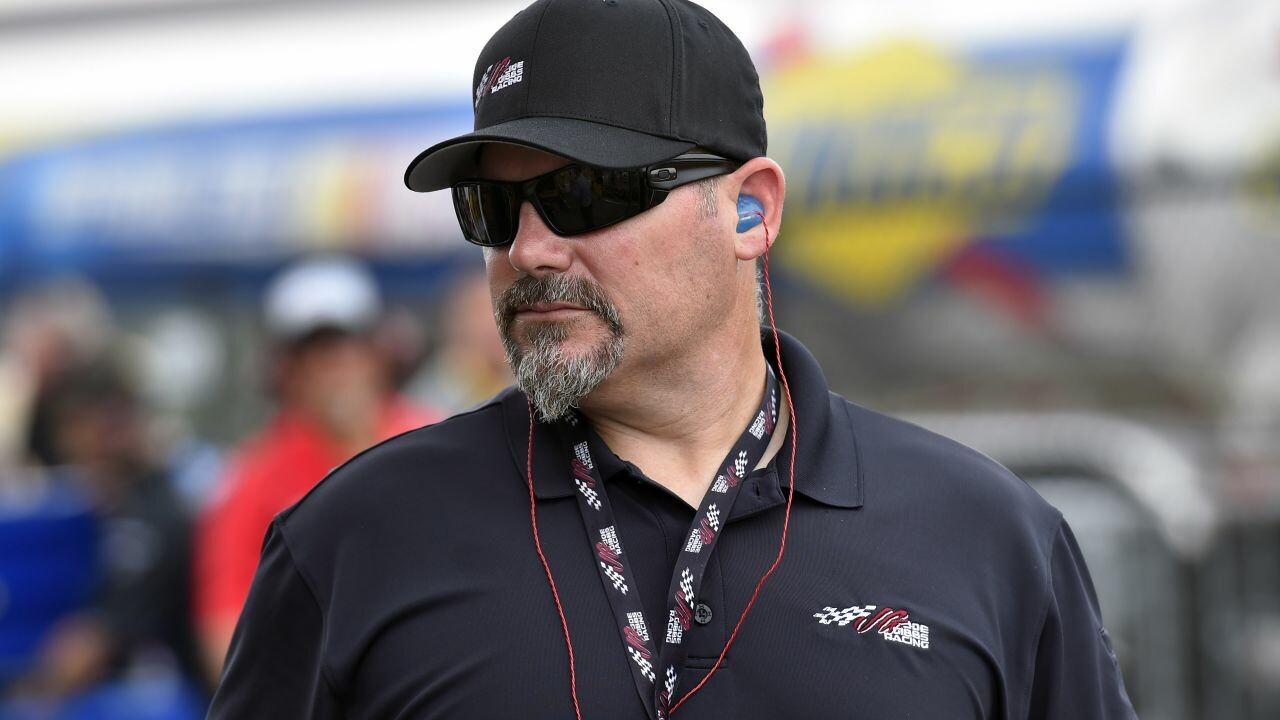We close our eyes and another year goes by….
On the last day of every year we take time to remember some of the friends and fellow motorcycling enthusiasts we’ve lost along the way. With a nod to the New York Times’ annual requiem about the lives others lived, we offer our thoughts and condolences to all of those who lost someone special in 2022.
Andre "DéDé" Malherbe was a rock star. The elegant but fierce Belgian was the post–Roger De Coster, pre–Jeremy McGrath superstar in Europe, a man who showed up at races in an Italian sports car, flashing jewelry with what we now call swagger, and then climbing aboard a works Honda RC500 motorcycle and getting down to the business of winning. After proving himself a real prospect in the early seventies by winning two European Cup titles on 125cc Zundapp motorcycles, he was signed by KTM, and then caught the eye of Team Honda. He took three 500cc World Championship titles in the time of the Grand Prix giants, his competitors ranging from De Coster himself (who was teammates for one year with both Malherbe and British party animal Graham Noyce) to "Bad" Brad Lackey to the big Swede Hakan Carlqvist, his fellow Belgian Georges Jobe, and his HRC teammates David Thorpe and Eric Geboers. He occasionally battled the Americans as well: David Bailey, Broc Glover, Rick Johnson, Jeff Ward. All of them respected and admired DéDé, both for his skills and all that style.
The Grand Prix journalist Harry Van Hemmen recently told this story about Malherbe: "André he was the star for several years with his Ferrari Testarosso and striking wife. After a mediocre first GP moto I heard him say to Sabine, ‘J´áttaque’ on his way to the start of the second moto. ("I'm going to attack.") After the race, he told her to ‘Give me my jewelry’ as he got ready for the podium.
"After the first title [of three] in August 10, 1980, there was total chaos in Ettelbrück," continued Van Hemmen, after DéDé's first 500cc title was clinched in Luxembourg. "I tried in vain to get close to the newly crowned champion for some quotes. Pointless. Sometime later I saw him leaving in a car full of guys who kept fans away from the hero. I ran as fast as I could with cameras and lenses flying and luckily the champion saw me. He rolled down the window and stopped the car and that's how I got his quotes. Moments you’ll never forget."
Upon his retirement in 1986, he turned to first sports car racing, and then the deserts of Africa to race the notorious Paris-Dakar Rally on adventure bikes. It was there in January '88 that he crashed heavily and suffered a broken neck. He was a quadriplegic for the rest of his life, which went on for 36 more years. Throughout, DéDé never lost that swagger.
Mike “MikeeeP” Patrick was one of the first to stake out a place in on the online motocross community. He was both a pioneer and one of the earliest proponents of using the internet to connect motocross fans all over the world. His site and forum Fresh Dirt was the online precursor to all of the moto-related forums and online destinations that now populate the internet. A racer himself who lived near the old Cocoa Beach track on the east coast of Florida, Patrick remained a motocross fan long after his own days on the track ended. One night in 1996, long before the races streamed live or were anywhere close to live TV, MikeeeP and his partner Jess Brin decided to literally type out all of the action happening at the Houston Supercross in the old Astrodome and post it in real time on a website called Whip-It.
It was a huge moment in the evolution of media coverage in our sport: suddenly, people all over the world could read about the race action as it was happening. That sounds downright humble today, but in 1996 it was a watershed moment. Cycle News would soon follow suit with their Virtual Grandstand feature. Patrick passed away in May. The news was sad, of course, but it brought back some good memories of those wild early online days and nights.
There were three MacKenzie brothers raised to race in Western Canada: Glen, Larry, and Dan. Their father, Dayton, a former AMA pro flat tracker for some 17 years, raised the boys mostly himself, their mother having passed suddenly when the youngest boy, Dan, was just four years old. Racing—motorcycles, go-karts, snowmobiles—kept the "Flying MacKenzies" together for much of their lives. The oldest boy, Glen, became one of the top-ranked motocrossers in Canada before a car accident in 1973 put him in the hospital for months and ended his motocross days. Instead, he accelerated into kart racing. Dan raced motocross but ended up finding more success in ice racing, winning multiple championships.
Larry, the middle brother, went furthest in motocross, rising from the 100cc Junior class (in which he raced a Harley-Davidson) to the very top of the rankings in Canada as a Yamaha factory rider. He won multiple titles, including the '73 CMA 125 and 250 Senior classes, and even made history in 1975 when he finished sixth overall in the 125cc Grand Prix of Canada at St. Gabriel, becoming the first Canadian to earn points in the FIM 125cc World Motocross Championships. In 1976, Larry Mackenzie won the White Memorial Trophy for scoring more points than any other rider in all forms of Canadian Motorcycle Association competitions: flat track, road racing, trials, ice racing, and motocross. He was still ascending as a professional racer when a badly broken leg the next year set him back.
According to his longtime friend and competitor Rick Sheren, "After he recovered from his leg he raced Canadian 250 Nationals in ’79 on a Honda CR250 sponsored by R&M Motocross, with the only Fox Forks/swingarm/Fox Shox in Canada, where he earned national #5. He rode an R&M Maico in 1980, but while filming a movie as a stunt double had a terrible crash that left him with a paralyzed left arm, which obviously ended his racing career. After some time he started working for me at R&M and later Tucker Rocky-Canada where he earned several sales awards. After Tucker Rocky left Canada he did sales at local motorcycle shops until he was semi-retired the last five years or so. He was a great guy who always had a smile on his face and was a great friend!" Larry also organized an annual trail ride known by everyone as the Players Club Ride that helped keep the good vibes and camaraderie of motorcycle racing in that area going strong.
Larry MacKenzie passed away on October 1 after a long illness. He was 67 years old.
Iris Rhodes was an enduro mom from North Dakota. Her son was David Rhodes, a regular member of Team USA's ISDE contingent in the early ’90s. The Rhodes family also ran a motorcycle dealership in the Pacific Northwest for 28 years, and as a result she become a racing mom to a lot of the kids David was racing with. One of those boys described as “the most heartwarming person. She was one of mine and my brother's second mom when we were at motorcycle events.” Another wrote, "Iris is/was a terrific person. From the shop to the track, she was as always there.” And another said of Iris and her husband, Don, “Both of them were caring and had great advice for us riders struggling to make it through the race day.” All told, Don and Iris Rhodes helped their son David make it to the ISDE eight times. He finished six of them, earning three golds and three silvers. Don and Iris both went along with David from 1990 to '94, and then Don himself went in '95 when the event was in Poland.
"They missed my first two years," David explained, "But it was so awesome that both of them were there when we won the Junior World Trophy team title in 1991 in Czechoslovakia. My parents were so proud and there is no way I could have done that without them. They loved going there to support me and anyone that needed help. I was truly lucky to have such supportive parents. My mom made friends all over the world going to the races."
on Rhodes passed away in February of 1997. Iris Rhodes followed him earlier this year. Says David of the loss of his mom, "My parents are back together now."
Allen Becker made a huge contribution to our sport, to the point that he helped define it. You may not recognize the name, as Becker was a modest man who did not seek the limelight, preferring to put the spotlight on others instead. Born and raised in Texas, he served in the United States Air Force and soon found his way into the insurance business. He also enjoyed theater and music. In 1966, he met Sidney Shlenker. They became business partners in a promotional company called PACE, which stood for Presentation, Associations, Conventions, and Exhibitions. This was right around the time that the Houston Astrodome—precursor to the modern sports stadium—opened for a wide array of sporting and entertainment events. Becker and Shlenker took over organization of the Houston Boat Show inside the new stadium, and it was an immediate success. Soon PACE was promoting concerts and club tours for various musical acts, including the then-unknown Bruce Springsteen and the E Street Band, which helped expand their business outside of Texas.
Meanwhile, the Astrodome was holding events like the Houston Livestock Show and Rodeo, where they covered the entire stadium floor with dirt for several weeks. That gave Becker an idea. He had heard about a motorcycles racing on the concrete floor of Madison Square Garden in New York City. The Astrodome was much bigger, and the dirt left from the livestock show could be utilized to run a real dirt track race. In 1968, the first AMA Grand National Championship Flat Track and TT races were held inside the Astrodome.
Out west, another concert and event promoter named Mike Goodwin had a similar epiphany, only his idea was to put on a nighttime motocross race inside the Los Angeles Coliseum. He called it the Superbowl of Motocross, and it became what we now know as supercross. Two years later, Becker decided to do the same thing inside the Astrodome, but he took it one step further, joining forces with Daytona International Speedway’s Jim France, who had been holding motocross races on the speedway’s infield since 1971, and started a whole new championship series. They called it the 1974 Yamaha Super Series of Stadium Motocross. Today, that series is Monster Energy AMA Supercross.
For the next 20 years, various other promoters would join the series, including Goodwin, Bill West, Mickey Thompson, Charlie Mancuso, and Paul Shlegel. In 1994, with Allen’s son Gary in charge of the series, PACE began consolidating by buying up the other supercross promoters, creating a unified series run by Gary Becker and Mancuso. By this point, PACE had become the largest live entertainment company in the world.
Finally, in 1998, Allen Becker decided to retire. He sold PACE to Robert Sillerman’s SFX and decided to focus on the things he loved, like saving historic theaters from demolition and renovating them. He also joined his sons Gary and Brian to form ACE Theatrical and tour Broadway plays around the country. As for SFX, it was purchased by Clear Channel Entertainment, and then spun off as Live Nation. Finally, in 2008, Live Nation’s Motor Sports division, which included AMA Supercross and Monster Jam trucks, was sold to Kenneth Feld’s Feld Entertainment Group, who run the series to this day.
Allen Becker was 90 years old when he passed away peacefully on December 12 at his home in Houston. And the series that started out in 1974—the Yamaha Super Series of Stadium Motocross—is about to turn 50.
Dave Brosius was one of those unsung heroes or motorcycle racing. A passionate enthusiast, he enjoyed working at the races in any and every role that might need filling. In his professional life he was a high-school industrial arts teacher at Tolleson Union High in Arizona for 29 years before retiring in 2005. He was also a rep for Sunoco Fuels. But on weekends he transformed into an excellent race announcer/assistant promoter/problem-solver. His voice was easily recognizable, and his passion for racing was obvious. He worked at races all over the country, but he was most prominent around the Southwest, where he could be heard calling many of the big races: WORCS, Endurocross, Best in the Desert, the World Mini GP, and even the occasional outdoor national at Glen Helen or Hangtown, all while dealing with the long-term effects of a progressive illness. Away from the races he had a loving family in his wife, Robin, their two daughters, Jessica and Christy, and a growing number of grandkids.
"This man was a true friend to everyone he met in the off-road racing world," said Dirt Bike Magazine's legendary editor Tom Webb. "Dave was a huge supporter of desert racing. He was a gifted announcer and was loved by every racer he came in contact with. I will miss him greatly."
It would be hard to exaggerate the influence that Dietrich Mateschitz had on global motorsports, as well as action sports across the board. The Austrian entrepreneur was the co-founder of Red Bull, the energy drink that practically invented that genre of beverage, after he came across an early incarnation of the drink in Thailand in the 1980s. The Red Bull company was founded in 1987, and as soon as the company began to grow, Mateschitz hitched Red Bull's marketing to the two forms of sport he loved, one traditional (racing), the other just beginning to ascend in the 1980s and ’90s. Red Bull soon become synonymous with such sports—particularly with KTM, as far as motocross/supercross go—and the energy drink giant was soon followed into the space by its competitors.
It's likely that no other non-manufacturer has poured as much money into global racing as Red Bull. Just this past year, Max Verstappen earned Red Bull its sixth Formula 1 drivers' title, to go with four manufacturers' titles. Red Bull also became heavily invested in soccer, operating top-division teams across the U.S., Austria, Germany, and Brazil. The company also signed personal sponsorships with athletes from countless other sports, and became a benefactor to various forms of music and art.
When he died at the age of 78 after a long illness, Mateschitz was still 49% owner of the company, and estimated to be worth some $27 billion (U.S.). In a statement after his passing, Red Bull posted a company-wide email to their employees all over the word: “In these moments, the over-riding feeling is one of sadness. But soon the sadness will make way for gratitude – gratitude for what he changed, moved, encouraged and made possible for so many individual people. We will remain connected to him respectfully and lovingly.”
Every amateur riders who's made it to the Loretta Lynn's AMA Amateur National Championships has been watched over by Jimmy “Red” Lovett. He was the longtime flagman and ranch hand at Loretta Lynn’s, stationed prominently at the end of the 10 Commandments, a spot he's worked for more than a decade. He was friendly, funny, and he loved it when the races came to town, which is when he'd put down his hammer or weed-whacker or whatever tools he was using around the ranch and pick up his yellow flag and work his corner. It was the day after the 41st running of Loretta Lynn's that Red passed away after suffering a stroke, just days after we celebrated his birthday there at the ranch. He was always happy and quick to protect and help anyone who raced past him. MX Sports had painted his flag stand red in his honor and will keep it red in the years to come. He will also be sorely missed.
Kenny Clark played a huge role in Yamaha's ascent in both the U.S. and global racing as U.S. Yamaha Racing Manager from 1977 through 1989. He was at the helm for 21 AMA National Championships at the professional level, but the brand's absolute peak may have been 1978, when Yamaha Bob Hannah dominated AMA Supercross for a second straight year, and then Hannah, Broc Glover, and Rick Burgett swept all three outdoor titles (Glover for the second straight year in the 125 class), and then U.S. Yamaha rider Kenny Roberts went to Europe and won the '78 FIM 500cc World Championship. All told, Yamaha would win 14 FIM world titles under Clark's reign.
Clark himself was a former racer. He worked with Dick Mann on Yankee Motorcycles, then got with Yamaha in 1973, just as the brand lost both Gary and Dewayne Jones as well as Jimmy Weinert and Marty Tripes, all at the same time. Clark responded by hiring Dutch rider Pierre Karsmakers to move to America and lead their efforts, and Karsmakers immediately won the first 500 National he ever entered (Daytona), as well as the '73 AMA 500 National Championship. One year later he would win the first AMA Supercross title with Yamaha. He then left Yamaha to work with Carroll Shelby on some projects, then returned in '77 to begin that epic run.
After helping spearhead the successful launch of the Yamaha FZR600 Supersport bike in 1989, putting a young John Kocinski in the saddle, Clark left Yamaha after budget disagreements with Japan-based management, according to Cycle News' Larry Lawrence
“I don’t think anyone ever knew I was forced out,” said Clark. “I just told the media that Yamaha could afford to either pay me or Damon Bradshaw and Bradshaw is a lot faster.”
After a stint in watercraft racing with Bombardier, where he was re-teamed with Kenny Roberts' legendary mechanic Kel Carruthers, Clark retired and moved to Idaho, where he enjoyed helping raise his grandkids and also riding off-road motorcycles in the mountains. His family reported that Clark passed away in early January.
In Ohio, the Andrews name is royalty. Phil Andrews was the patriarch of a family of racers, as well as the owner of a very successful bike shop in Salem called Andrews Cycles, from 1984 through his retirement in 2011. Phil was a decent racer himself, winning his class in the 1977 Blackwater 100, but his sons Joel and Fred took it to another level. Joel, the oldest, had his shot at becoming a pro wiped out by injuries, but Fred became one of the top privateers in the paddocks throughout the 1980s and early ’90s. His high point came when he earned AMA Pro SX/MX #17 for 1989. And after Fred's pro motocross career ended, the whole Andrews family went woods racing, where Fred earned the ’93 GNCC overall championship and two AMA National Hare Scrambles titles. And when those racing days ended, the Andrews family continued running their own team.
After retiring from racing, Phil Andrews continued to enjoy traveling to the races all over the country in his motorhome with his wife, Nancy. Phil suffered with Parkinson's Disease late in his life, and he ultimately passed away from it in February at the age of 77, as a proud grandparent of five.
For a generation of motocross fans, Jaroslav Falta was a tragic, mysterious hero, a rider who was robbed of an FIM World Championship, struggled with unexplained illnesses, and had to compete on antiquated, underpowered equipment. Falta hailed from what used to be Czechoslovakia, behind the old Iron Curtain that separated communist Eastern Europe from the free and capitalist West. He rode CZ motorcycles at a time when the brand was falling way behind the Japanese brands, as well as European brands like KTM and Husqvarna. Yet he often won on those brands, which opened doors for him that were otherwise closed to his fellow countrymen. For instance, Falta was allowed to come and race in America in 1973 and '74 as part of U.S. promoter Edison Dye's Inter-Am tour. In 1974 he won the Superbowl of Motocross in the Los Angeles Coliseum, making him the one and only rider in AMA Supercross history to win the one and only SX race he ever entered. (Falta did race in the '73 Superbowl of Motocross and finished fourth, but there was no AMA Supercross series at that point, so it was part of the Inter-Am tour.)
Two months after Falta won the Superbowl, he went into the final round of the '74 FIM 250cc World Championships in a close battle for the title with Russian rider Gennady Moiseev, who rode a KTM. The race was in Woolen, Switzerland; Moiseev had injured his knee and would struggle. But his Russian team decided to have the other Russians try to block Falta throughout both motos. The Czech was repeatedly knocked down or off the track by goons like Viktor Popenko, described in Cycle News as "a known torpedo." The ramming got so bad that Jim Pomeroy (the lone American in the race) and Belgium's Harry Everts began trying to protect Falta. It all came down to the final moto, with Falta having a shot at the title, but only if he won the moto. Jaroslav did just that, and it appeared to all that he was the new 250cc World Champion. But then a protest came out of nowhere to the FIM Jury arguing that Falta had jumped the starting gate. The FIM Jury, which included a Russian representative as well as an Austrian, decided on a 60-second penalty, which dropped Falta to eighth place and effectively gave the world title to Moiseev instead. The whole sordid episode was the subject of a great Racer X magazine feature by Ken Smith called "Stolen Glory."
Falta would race through 1982, always on those unreliable CZs, and while he would win the occasional Grand Prix, he never got close to the world title again, as he struggled with an energy-draining illness that was probably what we now know as Epstein-Barr Syndrome. He was an avid vintage racer in recent years. This past spring Falta was chosen as the Czech Motocross Racer of the Last Century in a poll, and Czech Republic President Miloš Zeman for the Medal of Merit of the First Degree.
"The medal is an award for my lifelong sports career and the achievements I have achieved as a Czechoslovak representative on the Czech ČZ machine and promoted my homeland with them," Falta told sport.cz. In late March, Jaroslav Falta suffered a heart attack and died at the age of 71. His daughter Martina collaborated on a wonderful new book about Falta's life and career by Gary Tippings called The Stolen Title, which you can purchase right here:
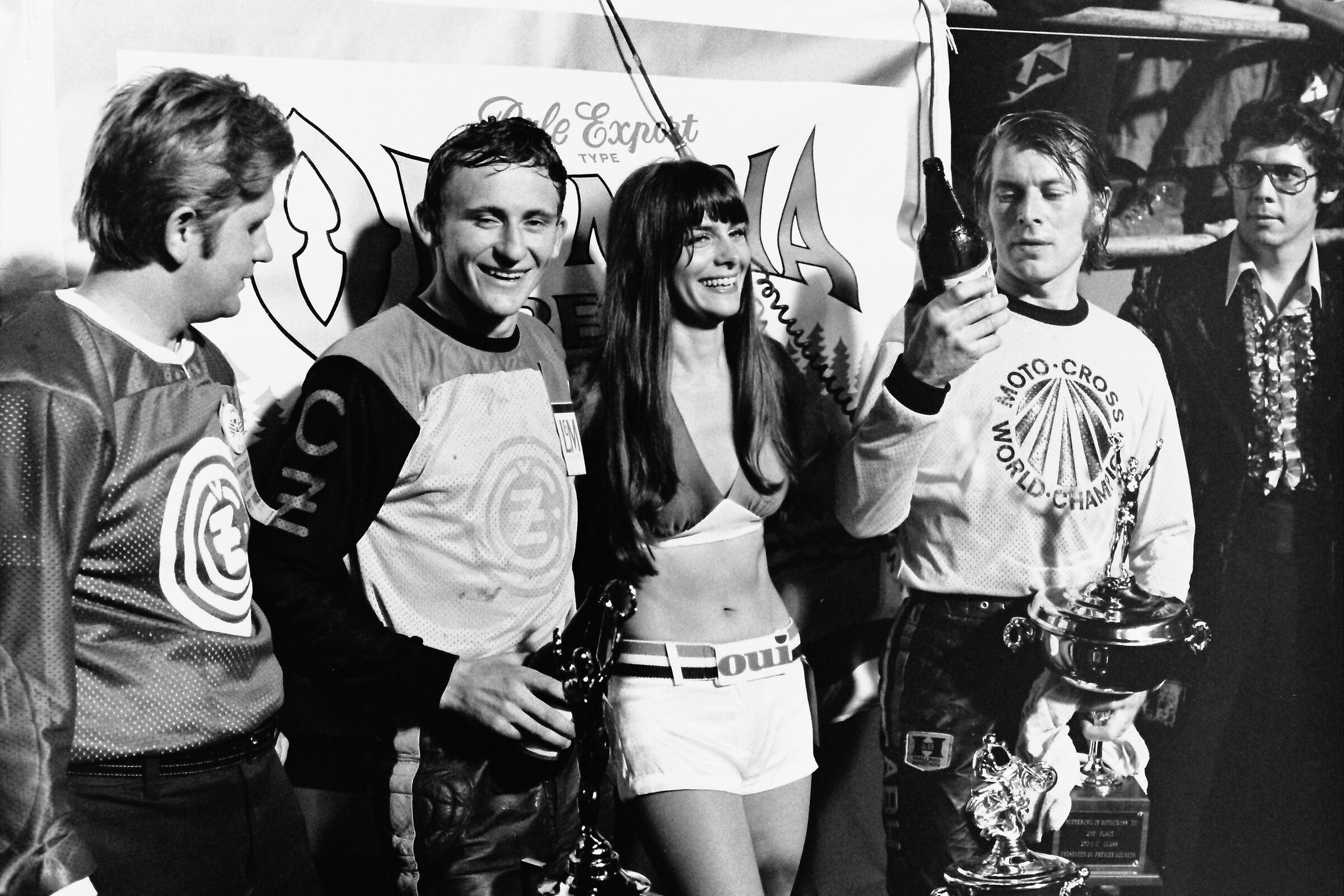

Mike White was a flat track racer who truly loved all forms of motorcycle racing. He was also very handy when it came to tuning motorcycles, minicycles—anything.
"My dad had a way of looking at the mechanical aspects of motorcycles that broke down complex ideas and made them very simple for me to grasp," said his son Zachary White, a mechanic himself, and now the manager of the Monster Energy/Pro Circuit Kawasaki juggernaut.
Mike White worked for a time at the famous Bobby J's Yamaha in Albuquerque alongside Clyde Buckelew, building Yamaha PW50 frames with YZ60 forks, Mike doing the motors and Clyde the frames. White was also involved in training young riders, including current Monster Energy Kawasaki rider Jason Anderson, the 2018 AMA Supercross Champion. Mike eventually got his own White Magic Cycle brand going, working open bikes of all sizes, including the game-changing Cobra minicycles. And he never lost touch with his flat track racing roots, even in the months before he lost his battle with cancer.
"I will always be grateful that he was my dad," Zachary White wrote on Facebook upon his father's passing earlier this month. "No dads are perfect, and I do believe that he loved my brother Jason and I... He truly loved motorcycles and he introduced me to motocross when I was little, which he used to teach me lots of life lessons. Motocross has given me opportunities to make lifelong friendships, and a career that has enabled me to provide for my own family. I’m sure that he has gone to heaven where he is now out of pain and riding with the friends he made through his own racing that have passed on."
Brian Penick was born in Florida, grew up in Maine, and moved back to Florida for good in the early 1980s. He loved music and, more specifically, audio engineering. He also loved motocross and hare scrambles riding as much as music, and he developed a dream of someday building a motocross sports park that would be a great venue for families as well as at-risk youth. He worked on that dream for many years, finally achieving it in 1994 when he opened Pepsi Air Dania Motocross Park in South Florida.
The facility immediately made a huge difference for motocross riders all over the Sunshine State, who found Air Dania to be an excellent racing and training facility. Unfortunately, suburban sprawl crept out into the space that Air Dania occupied and Brian was forced to close the facility in 2005. He continued following and participating in the sport, also enjoying his family (including Ana, his wife of 34 years, and their daughter Tara, as well as his granddaughter River). He also loved, helped, and rescued countless animals throughout his life. When he passed away unexpectedly on Easter Sunday, Brian Penick was 60 years old.
Al Albiker was a longtime fixture in southeastern motocross. Born in 1957 in Hagerstown, Maryland, Albiker was a fan of the sport and a local racer. He drove a bread truck route for several years and eventually landed in Tennessee, near Bristol. At that point he decided to make a big career switch and left the bread company to work at Kingsport Kawasaki & Suzuki. That's where he met a fast local prospect, Abingdon's Zach Osborne.
Albiker helped Osborne as mechanic for several years, and even started his own team, MotoPlanet KTM, which sponsored Osborne on a minicycle (as well as Robbie Horton, Jim Neese, and other fast regional talent). After some time, Albiker became a part-owner, along with Mark Osborne, Zach's dad, of Champions Cycle. When Zach signed his first professional contract with KTM, Albiker was his mechanic. It was during this time that he met another well-known prospect in Mike Alessi, and worked for a while as his mechanic before KTM asked him to take over their amateur program, then known as the KTM Factory Junior team, where he guided "Orange Brigade" riders to numerous championships in all of the major amateur events.
Prior to the 2009 season, Al was named team manager for the MotoConcepts Racing Honda team that Mike Genova was putting together. And finally, Albiker decided to start his own team, AG Motorsports, where he supported privateers like Kyle Cunningham, Kyle Peters, Cade Clason, Jimmy Albertson, and more. Al finally decided to settle somewhat, getting back to his roots in the food and beverage business, only now with a local energy drink brand called Gurrnaid, though he still liked helping support promising young riders through AG and Champions Cycle.
Unfortunately, Albiker began having health issue a couple years ago and was eventually diagnosed with oral cancer. He underwent extensive surgeries to try to manage the cancer. By February '22 it had reached stage 4, and it proved to be terminal. Al Albiker was 65 years old.
Sidney Poitier was one of the great actors of his generation, blazing a trail for future Black actors and actresses with groundbreaking roles like the teacher in the 1955 film Blackboard Jungle, as an escaped convict handcuffed to Tony Curtis in The Defiant Ones, and as a janitor helping a group of nuns in Lilies of the Field, for which he won the Academy Award for Best Actor. Poitier, who was born in the Bahamas, also made cutting-edge films where race and racism were often the focal point, including A Raisin in the Sun (1961), Guess Who's Coming to Dinner (1967), and In the Heat of the Night (also '67) which won the Academy Award for Best Picture. Poitier even went into directing, including comedy films like Stir Crazy (1980) with Richard Pryor and Gene Wilder—a box-office smash. The awards Poitier won for his work both in front of and behind the camera are too extensive to list here, but the highlights include being granted knighthood by Queen Elizabeth II. And when his acting days started to wind down, Poitier went into politics—sort of. He was the Bahamian Ambassador to Japan and held that title from 1997 through 2007. Finally, in 2009, he was awarded the Presidential Medal of Freedom, the United States' highest civilian honor, by President Barack Obama.
What does all of that have to do with dirt bikes? Well, in 1973, Poitier starred in a movie called A Warm December, a reimagined version of the fifties film Roman Holiday, where Gregory Peck and Audrey Hepburn frolicked around Rome on Vespa scooters. In Poitier's version, which he also directed, he plays Dr. Matt Younger, who is doing a summer residency in England, and he rides a different kind of motorcycle: a B50-series 500cc BSA scrambler. Poitier’s character also races motocross on the weekends. The film has some excellent racing scenes, though Poitier himself was not the actual rider. Instead, local professional rider Michael Dearn doubled for Poitier. (In a tragic footnote, Dearn was killed in 2007 while riding a motorcycle that was hit by a drunk driver.)
Sidney Poitier's brilliant career covered many topics and tough issues, but for dirt bike enthusiasts of that era, A Warm December was a cool masterpiece. Poitier passed away in January at the age of 94.
Bill Dill ran his Massachusetts-based 3D Racing Yamaha team for over 20 years, supporting privateers in Monster Energy AMA Supercross and AMA Pro Motocross. A former NESC racer himself, he and his brother and father—the three Ds—started their own team once Bill decided to hang up his own boots. They began hiring riders from the New England area, then branched out to athletes from all over the country. The team was a steady and highly respected presence in the pits, as Dill pushed hard to make the dreams of privateers come true. Among the better-known riders he worked with are Kelly Smith, Keith Johnson, and Jason Thomas. It was a mostly shoestring effort, with Bill doing everything possible to keep the team on the road and his riders in the races, all the way to the end of his battle with brain cancer, which came on the same February night as the '22 Minneapolis Supercross. On that night, while 3D Racing Yamaha team member Devin Simpson was battling to make the 250SX main event, Bill Dill passed away back home in Massachusetts. The team kept going, as Bill's daughter Kailyn picked up the reins, just as her father wished.
The news of Bill's passing was reported by his daughter on the team's social media account:
It is with a very heavy heart I have to announce the passing of the man himself Bill Dill. There is nothing that meant more to him than his team and his moto family. He’s left a permanent foot print in the moto industry and has touched so many lives.
This afternoon, while watching qualifying with myself, sister, and family by his side my daddy left this world and rode away into the sky. My dad lived life harder than anyone I’ve ever met, he worked hard and played even harder, he lived the life style most of us only dream of. There’s absolutely no words to express the sadness I feel and I’m not too sure how I’m going to navigate my way through a life without my best friend but I find peace knowing he’s somewhere warm, riding his bike, drinking tequila, soaking up the sun, free of pain. You’ve won the race dad, #35 forever💙
As for racing goes, I made a promise to my daddy, his legacy will live on and the 3D Racing flag will continue to fly💙🏁
-Kailyn
Here you can listen to the interview Racer X contributor Nick McCabe conducted with Dill at the '21 Unadilla National, while Bill was deep into his battle with his cancer. As you will hear and see, he was a fighter through and through. You can read the story in our magazine as well.
Valerie Lynn Monroe was a born leader. She was born in 1963 in Banning, California, and eventually found her way Beaumont, California. She loved the outdoors: camping, water-skiing, and dirt bikes. She married her high-school sweetheart, Roy Monroe, in 1981, and together they raised a family while also enjoying the great outdoors. She worked with the Beaumont Unified School District before her retirement in 2019, which was the same year she was diagnosed with stage 4 ovarian cancer.
According to a friend and fellow rider: "Val became an accomplished motorcycle rider and was always our trail-riding group leader. Val would blaze trails without hesitation or fear and would make the rest of us 'men' look like beginners! When Val was in her thirties she began racing at a local motocross track. There were no women's race classes so Val competed, and frequently won, against the men. Val's favorite motorcycle event was the Malcom Smith Invitational Soboba Trail Ride held on the Soboba Reservation. This 'trail ride' is a very difficult and demanding ride with natural obstacles that would defeat many of the participants, but not Val! She rode in this annual event at least 25 times and enjoyed every minute of it.”
"Soboba Trail Ride Day was Val's favorite day of the year and she always looked forward to receiving her invitation," wrote her husband, Roy, after she passed away in July. "She would get so excited in the days leading up to the event and the Saturday night before the ride she could barely sleep. She always enjoyed talking with Bob Graziano, his family and the crew. She loved the memories she made there, especially of the years she was invited to hang out and eat lunch with Malcolm Smith. Soboba was a big part of Val's life and brought her much joy over the years and, for that, I thank you!"
Rick "Cardo" Rinauro got into dirt bikes in 1991 and would remain a motorcycle enthusiast for the rest of his life. He grew up racing in NorCal and competed at Loretta Lynn’s, making the long trek from San Jose to Tennessee with his family twice when he was still a grom on 65cc minicycles. He turned pro and competed for several years in the 250SX West Region, riding for Tim Salverson's TRS Racing.
After his motocross career ended, he got a job working for American Honda doing durability testing, which took him to Japan frequently so he could work on and help develop the Honda CRF models. He also got involved in the Harley-Davidson scene and become a well-known stunt performer, going as far as racing the X Games in 2018. Ricky was close with his family and is survived by his son, Rhett Jameson.
After Rinauro passed away unexpectedly in March, a celebration of life was held for Cardo by his fellow riders from all parts of the motorcycling world, which you can watch here:
Mel Harris joined Suzuki in June of 1981 and immediately started rising through the ranks. That also just happened to be the year that Mark "Bomber" Barnett won the brand its first AMA Supercross Championship. Harris held many sales positions during his tenure, from Regional Sales Manager to his last position as VP, Sales and Marketing. While he was there, he helped keep the company focused on the importance of racing, whether it was in SX/MX, road racing, off-road, even ATVs. He was instrumental in bringing Roger De Coster, a Suzuki legend throughout the 1970s, back to help Suzuki catch back up with the other Japanese brands that were outpacing them in the ’90s and ’00s. De Coster in turn brought on Travis Pastrana, the 16-year-old action sports icon, and later Ricky Carmichael, who won Suzuki its second AMA Supercross title in 2005, and then repeated in '06. He also found a 15-year-old diamond-in-the-rough named Ryan Dungey, who would win Suzuki its fourth AMA Supercross title in 2010.
That was just SX/MX. Suzuki also had Randy Hawkins and Rodney Smith in off-road, Mat Mladin and Ben Spies in AMA Superbike, and ATV legend Gary Denton. All of them ended up in the AMA Motorcycle Hall of Fame. Harris, who was also on the AMA Board of Directors for several pivotal years, finally ended his tenure with Suzuki at the end of 2008.
But he wasn't quite done in the industry. He became a consultant with Quantya Electric Motorcycles, and then ATK, and finally SSR Motorsports as Vice President of Operations. Upon his passing in March after a long battle with cancer, Suzuki said of Harris, "Perhaps Mel’s greatest strength was his relationship with our dealers. He knew many on a personal level and took pride in being a strong advocate for their businesses."
In the early 1980s, Scottie Stewart was a very fast kid from NorCal. He had a Kawasaki Team Green ride, a clothing deal with JT Racing, and seemed like he was on the way to a professional career. That all changed in an instant on March 17, 1985, when Stewart suffered a broken back while practicing, leaving him both paralyzed and in constant pain. Over the next 37 years he got on with life as best as he could, becoming a fixture in online motocross forums like Vital MX as "OCScottie," but neither he nor his doctors could ever stop the pain. As a matter of fact, it was getting progressively worse. After exhausting his options, he made the decision in April to take his own life and end his misery at the age of 52. He asked a friend to post a farewell message he wrote himself on the Vital MX Forum to the community he was long a part of, then consumed a toxic, fatal concoction.
Farewell my friends. I am sorry it has come to this, but I can no longer carry on in this amount of pain. This has not been a spur of the moment decision, I am of sound mind and thinking clearly. Over time my physical well being has declined at a rapid pace and each day gets worse and worse. I can no longer function like this, I have seen many doctors and pain clinics and there is no solution that brings my pain down to a level that is acceptable. I have been dealing with this for over 10 years, and in recent times, the last 2-3 years, the pain has become unbearable. I never thought it would come to this, but it is the cards I have been dealt. I look forward to moving on and ending this suffering.
I have known a lot of you for many many years and your love and support over these years have been amazing, I am truly grateful to each and every one of you. I know some will not support my decision, all I ask is please accept that I am doing what is right for me. I have the loving support from my family and they have been at my side throughout this entire journey. I know it is going to be painfully hard for them to endure losing their youngest son, but watching me day to day in pain also affects them. They only want what is right for me, and all I ask is the same from you.
All I ask is you please respect my decision and support me, when you think of me, think of good thoughts and how I have touched your lives. I love you all and truly wish my life would have turned out differently. I have accomplished a lot in my 52 years and there are many things I am truly proud of; I hope I have touched lives and made a positive impact on them.
In closing, I will miss all of you dearly and hope to see you on the other side.
OCScottie closed his farewell note with a bit of irony and levity:
*side note: Ironically this is also the same day both Kurt Cobain and Layne Staley passed, along with my favorite cat Ty three years ago.
On the eve of the 2022 Unadilla National in early August, track founder Ward Robinson passed away, which seemed fitting. The world-renowned track and all of the amazing events that have taken place there over the years are part of his legacy in motocross. And it's no exaggeration to say that Robinson was one of the founding fathers of American motocross. He got into motocross back when many here in America were still calling it "scrambles." He owned a motorcycle dealership and sponsored riders in the upstate New York area. In 1969 he began building what would become a truly iconic motocross track on his farm in New Berlin. When the AMA finally began sanctioning professional motocross in 1970, Ward and his wife, Peg, were right there, hosting the second round of the first Trans-AMA Series on October 18, 1970. The winner of the race was multi-time 500cc World Champion Jeff Smith of Great Britain, who was riding a BSA.
Over the decades that followed, the Robinsons hosted all kinds of events, though only once or twice a year, which meant the grass would grow thick all around the track, making it a natural beauty. They hosted Inter-Am races as well as Trans-AMAs, both of which pitted the top Europeans of the day against America's best—the annual battles between Roger De Coster and Bob Hannah were the stuff of legend—as well as outdoor nationals. In 1978, Unadilla became the first track to host a U.S. 250cc Grand Prix, which was won by Marty Tripes. And then, in 1987, Unadilla became the first U.S. venue to host the FIM Motocross des Nations. That race was won by Team USA trio Hannah, Rick Johnson, and Jeff Ward. And to this day, the track—now run by Ward and Peg's children, Jill and Greg, after their parents retired—is one of the biggest and most prestigious stops on the AMA Pro Motocross schedule.
“The passing of Ward Robinson is a big loss for everyone—he was the face of Unadilla,” said Hannah after Robinson, 85, passed in August. “First time I met him he was at the ’76 Trans-AMA, and he out there on a tractor. I had no idea who I was, nor did I know who he was, but over the years we got to be pretty good friends. I really enjoyed visiting the area and working with him and his family, and of course Unadilla was my absolute favorite motocross track—it was a man’s track—and I loved it more than any other track in the world.” Bob Hannah was not alone in that sentiment.
See more on Unadilla's history from our September, 2019 issue:
https://digital.racerxonline.com/previewissue/september-2019/unadilla/
(Don Emde, the motorcycle industry historian, author and winner of the 1872 Daytona 200, noted the passing of C.H. Wheat on November 15, posting the following piece about Wheat’s long and influential career)
C.H. Wheat was a popular and successful racer in the early and mid-1900s, then become an innovative motorcycle industry business owner while still racing, before retiring to continue owning his motorcycle business and sponsoring off-road racers worldwide. He was honored as the recipient of the Trailblazer’s 2015 Dick Hammer Award, the club’s highest award.
Wheat became a Class C racer in the early-mid-1900s (the original hooligan class), and was met with great success in both road and off-road races. Some of his biggest victories include titles earned at DeAnza Park, the Catalina Grand Prix, and the Torrey Pines road race. During his career as a racer, he competed against some of the most legendary names of motorcycling, including Ed Kretz Sr., Ed Kretz Jr., Dick Dorresteyn, and Dick Mann.
Wheat’s most memorable race was the Riverside TT Pacific Coast Championship in 1957, where he battled Ed Kretz Jr. for 25 heart-hammering laps. The two were said to pass each other at least three times a lap, and finished barreling across the finish line neck-and-neck to the audience’s standing ovation. As a racer, Wheat recognized a need for better performance parts that were racing-oriented. This prompted him to found IMS Products in 1976, a leading designer of aftermarket off-road motorcycle racing products. Wheat introduced high-performance parts and accessories that revolutionized the competitive scene, including high-capacity quick-fill fuel tanks for distance off-road races; wider, more ergonomic foot pegs; and more durable shift levers.
After Wheat retired from racing, he continued to run IMS Products and a number of other motorcycle product companies. In 1995, he teamed with off-road racer Scott Wright to expand IMS Products. With Wright, they started sponsoring racers worldwide, and used their input to help design parts to satisfy the needs that they saw in the off-road racing scene. IMS Products now sponsors more than 1,000 racers worldwide.
Wheat continued to give back to the community through pro-motorcyclist philanthropic work. With Rider Down and other organizations, he networked to help injured riders with financial assistance.
Preston Petty was a racer before he became an entrepreneur. Born in Los Angeles in 1941, he got his first real motorcycle at the age of 13 and began competing in scrambles and off-road events. By the end of the 1950s he was considered one of the top riders in the country. According to his AMA Motorcycle Hall of Fame biography, Petty's skill came from hours spent riding in the Santa Monica Mountains: "I could take off and hit the trails from my backyard. Every day after school, I’d hop on my bike and explore the hills and canyons. In the 1950s, it was still wide open enough in Southern California to do that. It was a great time to learn to ride."
In the '60s and early '70s, Petty began competing in bigger events, like the International Six Days Trials, as well as the Baja 1000. He soon became one of the first riders in the country to be signed to race for what we now know as Team Honda. He also liked to dabble in his race shop, trying to improve the performance of the bikes he was given to race. It was from those late-night garage sessions that he came up with the idea of making motorcycle components out of plastic, relying on his computer programming skills to design and produce the molds needed to make the parts. Petty Plastics became a game-changer. By the early 1970s, all serious racers were taking the stock aluminum or metal fenders off their bikes and running Petty's plastic fenders. At peak sales, Petty was selling 2,000 a day.
After Petty sold the company, he got back into racing in vintage and vet events. He also became an early proponent of electric motorcycles. He was inducted into the AMA Motorcycle Hall of Fame in 1999. In recent years Petty's health began failing, and he passed away in January at the age of 81.
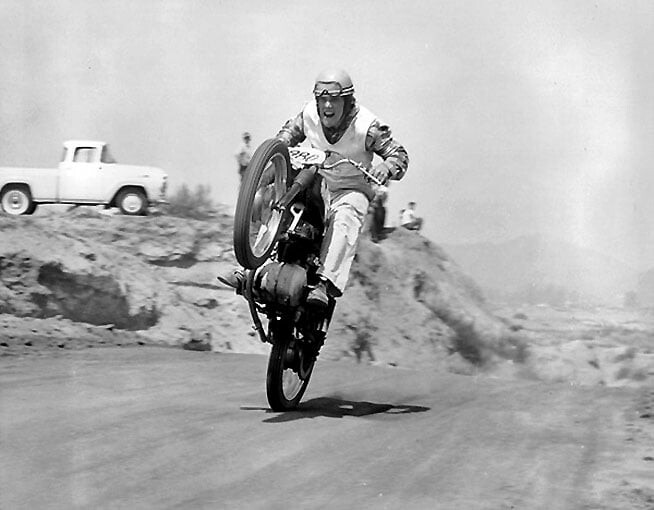
Gary LaPlante was a jack of all trades when it came to motorcycling. He successfully competed in trials, off-road, desert, motocross, enduro, and even road racing at one point. He also worked many jobs in the motorcycle industry, including as a R&D test rider, mechanic, PR coordinator at Kawasaki, Product Evaluation Coordinator for American Honda, Aftermarket Program Administrator for the Motorcycle Industry Council, and Marketing Manager for White Brothers. He was also the founder of the MotoVentures Dirt Bike Training Center, which is located right across the street from Cahuilla Creek MX in California, and was an original member of the Southern California Professional Bench Racers Association (SCPBRA).
In 2012 LaPlante even published a book called How to Ride Off-Road Motorcycles. The book received rave reviews from the press and holds a 5-star rating on Amazon. After LaPlante was diagnosed with brain cancer there was a huge outpouring of support from the many fellow riders he touched along the way. Gary's long motorcycle ride finally ended in August. He was 65 years old.
In the early 1970s, Jack Holbert and his brother Carroll got into motocross racing, along with their five boys: Jack's sons David and Steve and Carroll's sons Mike, Bob, and Tom. They lived in Mt. Morris, Pennsylvania, where the brothers had built a business called Mt. Morris Tire on their family farm. They also let the boys ride their dirt bikes all over their land. In the fall of 1976, my dad—Dave Coombs Sr—was looking for a place to build a new motocross track. The Holberts invited him out to their farm, and within two weeks the first local motocross race at High Point Raceway was held. Within a year it was on the AMA Pro Motocross schedule, where it's remained ever since (with the exception of 2020 due to pandemic restrictions) as one of the premier stops on the tour. Jack always enjoyed his time at the racetrack, and more than anything took great pride in working the heavy equipment used to prep and maintain the course. He also enjoyed working on other courses over the years, including Loretta Lynn's Ranch and the old Steel City Raceway in Delmont, Pennsylvania. But High Point was Jack's home—literally, as he lived in the house right behind the power tower that hovers above the track. And that's exactly where he was in September when he passed away at the age of 85.
David Lindsey was one of those unsung heroes of the infield at motocross tracks all over the Midwest. A resident of Kentucky, Lindsey could often be found working the equipment, tractors, and water trucks at raceways like Muddy Creek, RedBud, and Loretta Lynn's. He was a very funny and talented man—he enjoyed playing guitar, singing, collecting vintage guns, and wrenching on pretty much any type of motorized vehicle. Tragically, he died on Tuesday, May 10, in a house fire in Pulaski, Kentucky. David Lindsey was 64 years old.
Back in 2015, the Pro Motocross Facebook page got a message from a Slovakian motocross fan who happened to be spending the summer working in Virginia, asking if any "good guys" could maybe give him a lift that weekend to the Budds Creek National in Maryland. He didn't have a car, and there is no easy train or bus route from where he was to the track. So a message was posted on the Vital MX board to see if anyone could help. Dwayne "MXerDW" Williams, who had decided to spend that summer following the Lucas Oil Pro Motocross Championship in his camper. When he saw the message, he literally took off from the track to Virginia to pick this stranger up and drive him up to Maryland to see the race.
That story says it all about what kind of person Dwayne Williams was, always smiling, always ready to pitch in, always up for a good bench race. He liked doing little things, like posting all of the race-day links to the Vital MX Forum to make watching the races easier for everyone else. Williams suffered a stroke last winter and never really recovered, eventually passing away in May.
Carson Carr was a 24-year-old rider from Escondido, California. He and his family traveled the country on the amateur circuit, hitting all the big races before he turned pro in 2018. He qualified for several outdoor nationals, then decided to give off-road racing a try. He also began working at multiple moto companies within the industry, including DRD Racing and AEO Powersports. He also enjoyed jet-skiing when he wasn't riding dirt bikes. "Cable Carr," as his friends affectionately called him, was out practicing on March 6 when he crashed hard. He eventually succumbed to the injuries, passing away while surrounded at home by his family.
"Carson touched many lives, which has been clear the last few weeks," the family posted. "We are so incredibly moved by all the love and support we have received from all of you. Thank you to all our friends and family for their continued prayers and support. We cannot express what it has meant to us all."
Vurbmoto posted, "For as much as we all love this sport, it can also be incredibly cruel and heart-breaking at times. We are incredibly sad to see that the charismatic Southern California native and privateer, Carson Carr, has passed away after sustaining a practice crash. Our hearts goes out to Carson, Carson’s family, and his friends in this painful time. If you’re spinning laps this weekend, let’s dedicate those laps to Carson and that big, infectious smile of his cablecarr153"
This is video from 2017 that Transworld Motocross did with Carson Carr:
On January 16, 19-year-old Payton Tyler Lay Smith was riding his motorcycle near Glamis in the Imperial Sand Dunes Recreation Area when he crashed at speed and was thrown from his bike. According to a report on the accident in the Calexico Chronicle, first responders tried to revive him but were unsuccessful.
Smith was the oldest son of Jillyin and Braden Smith and the grandson of Nancy and Marty Smith, the multi-time AMA Pro Motocross Champion and AMA Motorcycle Hall of Famer, who were both killed in a horrific dune buggy accident 21 months earlier, not far from where Payton crashed. A family friend described Payton as "a loving and kind soul to everyone he met. He always greeted everyone with a big hug and a positive attitude. He was a vibrant light, a lover who reciprocated love to everyone around him."
Jason Edwards was a fast and promising young rider from Cleburne, Texas. Growing up in the 1980s on the amateur motocross circuit, Edwards earned a Kawasaki Team Green ride. He and his family attended all of the big amateur races. From his days on 80s until he graduated to pro on 250s, Edwards was also a contender for wins and titles. He was also a talented singer and rapper, just like his friend and neighbor (and fellow rider) Robbie “Vanilla Ice” Van Winkle. At Loretta Lynn's one year, Edwards dominated the talent show with a song he wrote and performed called "Team Green Giant." (In 1992 Gary Bailey made a video of the song, showing Jason riding on the Loretta Lynn's track, which you can see below.) Jason wrote and performed another song for his friend Jeremy McGrath's first AMA Supercross Championship in 1993, as the season celebration. He later wrote a country song called "Always Raining" with hopes of landing a Nashville record deal.
Edwards raced professionally in 1992 and '93, finishing 11th both years in the 125 East Region AMA Supercross standings. He even landed on a Hi Flyer Trading Card one year. His best pro finish was his last, at the 1993 Indianapolis Supercross at the old RCA Dome, where Edwards finished sixth in the 125 SX main event.
In recent years Edwards was running a landscaping business back home in Texas. He passed away unexpectedly last month at 50 years of age.
"Jason was a natural teacher of motocross and could relate to and inspire the youngest of students with great inspiration. He had natural talent with anything from waterskiing, golf or anything sports related," a friend wrote in his honor. "Jason had a charismatic smile, unconditional love for anyone or anything and the ability to win over anyone’s heart with his compassion and love for life."
Two "Moto Moms" from families long associated with Southern California motocross passed just this week. Marina Peters died following a long battle with cancer. She was the wife of AMA Motorcycle Hall of Fame promoter Stu Peters, as well as the mother of professional racer-turned-track architect Marc Peters and Sondra Peters, who long worked alongside her dad with the CMC. Together, the Peters family is practically motocross royalty, as Stu was an early American motocross pioneer racing in Europe, and the CMC Golden State Series he later built was arguably the most competitive and prestigious regional motocross series ever held.
Diane Holley was the wife of longtime professional mechanic and engine builder Al Holley and the mother of former factory rider and longtime race announcer and magazine test rider Jim Holley. She played a behind-the-scenes role in the careers of both men, but she was extremely supportive of both. Holley was 82 years old when she passed away peacefully at home this week, surrounded by her family.
"She was a good woman who touched a lot of people," Jim said. "She lived the last nine years without Dad, but now they're finally together again."
James Marro was born in the midst of the baby boomer generation in 1949 in New York. He was raised 45 miles north of New York City in the Hudson River Valley town of Cortland Manner. By the time he was 12 years old, he was working on and rebuilding automobiles with relative ease. He would easily go onto make a career for himself as a certified Master Mechanic specializing in Volkswagen Automobiles.
In 1974, he married his wife Christine, and they would enjoy a lifelong partnership. They would raise two children, Melissa and Michael. As lifelong gearhead, somewhere in the 1970s, he bought himself a Bultaco Alpina dirt bike, and took to riding it in the local sand pits and when he wasn’t working on cars.
James keen focus as a gearhead as well as his pretty blue Bultaco would nurture his son's passion for dirt bikes and then motocross racing, something that James embraced and supported fully. Starting in the late 1980's, James and Michael became fixtures at the local scene in New York's AMA District 34, starting with Michael riding a KX80 in the kids mini class.
"You know, he was the one father that was there every weekend, and I mean every weekend. He was like a father to so many of us - we were all so into it, and racing every weekend, but maybe not there with our own parents, sort of each finding our way. He was there to help you work on your bike, or to bust your balls. Well usually usually busting our balls, but always in a good way, and no matter what, he was always, always there for us," said Bill Baker, another local expert racer from New York who also grew up a few miles down the road. Week in and week out, rain, snow, heat and dust, he was at the races supporting his son's passion.
No story of James is complete without a few references to his love of being diplomatically politically incorrect. It might have come from the need to have absolute perfectionism in his mechanical career, or his ability to fix anything that was broken, but his ability to use profanity as noun, pronoun, adjective, verb, or whatever else to fit the conversation was legendary, as was his hand on the e-brake on a snowy day, or whatever else might catch you by surprise. You never knew when he would throw a well-placed politically incorrect curve ball on a good conversation.
Like a proper New Yorker, he and Christine retired to Florida in 2003, having had enough of the snow and cold. In 2007 he started to have some health issues, and after a nearly 15 year fight, those issues finally got the best of him in May of 2022.
Ron Meredith, the longtime friend, and mechanic of Travis Pastrana, suffered a terrible crash while out riding in August. Meredith worked with Blue Oval, the Ford R&D Group in Detroit, when he wasn't being #199's Mr. Gadget. If Travis wanted to ride an "RM-ZILLA" Suzuki 500, Ron would build it; when he wanted to race the Motocross of Nations for Team Puerto Rico, Ron would spin the wrenches and get him to the starting gate. When Travis wanted to back-flip into the Grand Canyon, Ron would make sure both the bike and the parachutes worked. A former member of the U.S. Army, Meredith was a sky-diving enthusiast, as well as a member of Wingsuiters Anonymous in Waterford Township, Michigan. His brother Michael eulogized Ron with these words:
“For those I have yet to meet, my name is Michael. Ron was my brother, but also my best friend. As you all know, Ron was larger than life in many ways, especially to me. It is very hard to try describe him in just a few words, so I thought I would share just a few examples of the man who was my brother. As a kid, Ron was the kind of older brother who would help his little brother turn a cardboard box into airplane and then fly you around the room in it. He was also the kind of brother that would hold you down and tickle you just for fun (as older brothers can do). Really, he was the kind of brother who would drop everything and fly out to Maryland on a moment’s notice just to give a few words of encouragement when I was struggling during my first few months at the Naval Academy.
Ron wasn’t perfect, as anyone who rode with him in a car in traffic can testify to, but he was a fierce friend, loyal son, and loving brother and uncle. As I listened to people’s stories of Ron over these past few days, it confirmed what I already knew: Ron would treat you like he had known you forever from the moment you met, he was the first person to step up and help if you needed it, and he was a source of inspiration for everyone.
Despite being separated geographically, Ron and I would find the time every few months to meet up, if only for a day, and go mountain biking or dirt bike riding or jet skiing. We talked on the phone almost every day, sharing our ups and downs and planning our next brief adventure. I just can’t and don’t want to imagine my life without him. He leaves an incredible legacy of love and friendship that I will keep alive with my memories of him and I hope you will do the same.”
Trigger Gumm described himself on his Facebook page as a "daredevil motorcycle madman." Born and raced in San Clemente, California, he was a skateboarder-turned-rider who loved to jump dirt bikes. A member of the original Crusty Demons of Dirt freestyle crew, he began knocking out distance record jumps. A modern-day Evel Knievel, he jumped 277.5 feet in 2005, landing himself in the Guinness Book of World Records. "Nobody went bigger than Trigger" was a saying in FMX circles, though that mindset came with a prize: One year later he tried a 315-foot jump at a casino in Oklahoma but lost control, crashing hard upon the landing. He was fortunate to walk away. When he passed away unexpectedly in June, this tribute video was posted on his Facebook page:
One day after hundreds of riders attended an open house at private Museum of Vintage Trail Bikes in Cheshire, Massachusetts, Jim Hoellerich died at the age 88. His hilltop museum was actually several barns and basements full of off-road antiquity, including more than 100 vintage motorcycles companies like OSSA, Bultaco, Penton, Rokon and Yankee. Besides old bikes, the museum was chock full of old enduro memorabilia, like dealership signage, vintage leathers and riding jackets, boots and toolboxes and trophies from races past. The land itself that made up the Hoellerich farm and museum was historic: In 1973 it was the site of the final Special Test section for the International Six Days Trials, the first time the event was ever held in the U.S. Hoellerich became a collector after that event, with a specific interest in Spanish bikes or American-made brands like Yankee, Penton and Rokon. He ran the museum himself, which was only open by appointment, and he never sold any of his prized collection off, reminding visitors, "I'm a collector, not a seller," adding that all of the artifacts in the museum would be sold upon his death. “All the stuff’s going to auction. It’s in my will. It’ll go to collectors anyway.” Indeed, just a couple of months after his passing in May, the entire Museum of Vintage Trail Bikes was sold off at https://nachtflug.smugmug.com/Vintage-Motocross-1/Hollerich/, piece by piece.
Allen Picard was something of motorcycling renaissance man. He loved the two-wheeled like, and he worked a wide variety of jobs in the motocross industry, including as a designer, marketer, race team manager, agent, photographer, and even as one of the rig drivers for Team Honda. He was working at Western Power Sports in Idaho when they launched their Fly Racing brand, and as a result worked closely with top riders and race winners like Branden Jesseman and Danny Smith. Allen and his wife Janet had three children: Ryan, Ashley and Cheyne. They raised the kids in California until 1998, when they moved to Boise. In recent years he took to riding Harley-Davidsons with Janet, even as the cancer he was diagnosed with began to worsen. Allen Picard passed away in April at the age of 59.
Ryan Varnes was an American Flat Track competitor from Pennsylvania who raced motorcycles for 19 of his 24 years. A third-generation rider, he rose from a fast young minicyclist to a national stardom. He had already won four rounds in his rise to the top of the AFT series. He was awarded the Kyle McGrane Scholarship in AMA District 6 and graduated from Garden Spot High School, and then Penn State Berks. He ran track and field in school and also enjoyed hunting, fishing, and spending time with close friends. On July Fourth weekend Varnes was competing in the Production Twins Main Event at Weedsport Speedway in Cayugo County when he went down. On-scene emergency personnel responded to the incident immediately and transported Varnes to Upstate University Hospital in Syracuse, New York, where he later succumbed to his injuries.
“The Varnes family has been a staple in the flat track community for decades, and they need our prayers during this difficult time,” said Gene Crouch, COO of AMA Pro Racing. “Ryan was the class of the field, both on track and off track. His bright smile, perpetual optimism and loyal friendship will be dearly missed. Our thoughts and prayers are with his family and friends.” The press release added that Ryan Varnes had made the selfless decision to register as an organ donor. His spirit will live on not just in our memories and in the record books, but also by extending the lives of others in dire need.
Marc Daniels was a vet rider and contractor from Woodbridge, Virginia. He was also a regular at Budds Creek Motocross Park in Maryland. He was riding there on May 1 when he crashed on what's famously known as Henry Hill. Despite the best efforts of the medical team on the scene, Daniels did not survive the crash. The Budds Creek Motocross Park homepage posted of him, "Marc loved riding his dirt bike with his friends and family. He will be remembered as one of the nicest guys in the pits. He will also be remembered a fierce competitor. Marc was 51 years old. Please keep the Daniels family in your prayers. Godspeed, Marc.”
Daniels' longtime friend and fellow rider Randall Everett wrote, "When motocross became my job he still made it fun for me. He was my riding buddy and my older 'brother.' He supported my MX school since the first day I started it, and supported me every day until the last day I got to hug him... A lot of people know Marc - you couldn’t miss the #420 on the 'Ivyhill' Yamaha. He’s been bringing the crew together for the last 10 years and responsible for most of the great memories I have at the track with my friends. Such a brutal sport. I’m so sad for his brother, his wife and his entire family. RIP Marc. We’ll see how many turns you can hold me up in in heaven. We’ll share a post-moto RedBull again soon my bro..."
Chance Cody added, "We met you through racing and through you we met our moto family, a family like no other. Whether we wanted to ride or not, we wanted to be at the track with people like you. You brought together everyone and made even the worst race days a blast. Thank you for always being the rock of the moto fam after 10 years."
The entire motorsports world was shocked by the news that Coy Gibbs, the founder of the Joe Gibbs Racing Motocross team, and the co-owner and COO of JGR’s NASCAR program, passed suddenly in his sleep. It happened on the night after his son, Ty, had just clinched NASCAR’s Xfinity Series Championship. Coy was just 49 years old.
Jason Weigandt was a friend and neighbor of Coy Gibbs. Upon his passing he wrote,
"The Gibbs family legacy is massive in both the NFL and NASCAR. But knowing Coy Gibbs meant much more than knowing the success of the family in competitive sports. Coy was one of the most unique people you’d ever meet, someone so full of knowledge and life experience, and also so giving with that knowledge. Coy was a quiet personality on the outside, never one to rant and rave in the media or public, but if you got into his inner circle—and plenty of people in this industry got there during his dozen years with the JGRMX team—you got access to a person like no other. Coy lived to cut up with the boys. Maybe that’s what comes from being raised in a football locker room, both with his dad as an NFL Hall of Fame coach or with Coy himself playing Division 1 NCAA football at Stanford. Or maybe it’s just the way he was. But everyone that met Coy felt like Coy was his best friend. Coy would tear you down, hope you gave it back to him, but also offer his world to you. He would never want people to know how big his heart was. He’d rather just make fun of you and have you battle with him. But you knew, deep down, he’d do anything for anyone. Including start a motocross team and give dozens of people jobs in North Carolina, outside of the traditional California motocross base. And even when he had to close the JGRMX team, he still found work in the NASCAR shop for most of those guys. Coy would do anything for anyone he knew, and when you consider how many people he probably knew, that’s a massive list of people who he had an impact on."
A celebration of life was held for Coy Gibbs in the NASCAR team's race headquarters. Thousands of people attended, including friends and teammates from his football days, from his race car days, from his motocross/supercross days, from seemingly any and everywhere that he had found himself in his 49 years. It was a true celebration of a life well-lived.
The January 2023 Issue of Racer X Illustrated
Reason For Being

[The following first appeared in the December 2022 issue of Racer X Magazine, in my column "Reason for Being."]
Amateur motocross lost a great friend when Loretta Lynn passed away on October 4, at the age of 90, at her home in Hurricane Mills, Tennessee. For more than 40 years, the world-famous country music singer had opened her family’s Ranch to countless motocross families for the annual AMA Amateur National Motocross Championship, which has been held there every summer since 1982. For the first half of her life, Loretta probably didn’t know motocross racing even existed, but she spent the second half of it as a gracious host to the big race that is known in motocross parlance by her name itself: Loretta Lynn’s.
Her introduction to motocross came in August of 1981 when she was arguably at the height of her popularity, as Sissy Spacek had just won the Best Actress Academy Award for her portrayal of Loretta in the biographical movie Coal Miner’s Daughter. Loretta herself was literally born a coal miner’s daughter in Butcher Holler, Kentucky, then worked her way up in the music world with the tireless help of her husband and manager, Mooney (played by Tommy Lee Jones in the movie). Together they climbed to legendary status in Nashville, the center of the country music world, where she was a regular on the Grand Ole Opry stage. Eventually Loretta and Mooney would treat themselves with the purchase of the massive ranch and plantation home in Hurricane Mills, not far from Nashville. And that’s where a motocross promoter—my dad—came knocking one day in 1981.
I’ve told the story before, but in case you missed it, we were on our way home from a rough week at the old Ponca City NMA Grand National in Oklahoma, and my dad was convinced he could build a better youth/amateur national for the AMA. Fellow promoter and partner in the idea, Paul Shlegel, suggested we stop at Loretta Lynn’s Ranch and have a look around. He’d been there before and thought it might make an ideal place for a once-a-year motocross race because it was centrally located, had lots of room and lots of amenities for campers, and it had the hook of a country music superstar’s name recognition. It was a long shot, to say the least, but somehow my dad was able to convince Mooney and Loretta to give the idea some thought. By the end of that fateful day, they had a deal. The next August, the first AMA Amateur National Motocross Championship at Loretta Lynn’s Ranch would be held, and it’s been held there every summer since.
Over the years, Loretta Lynn’s name became synonymous with amateur motocross in America. Motocross also became a part of her family when one of her twin daughters married a rider she met one year at the races. (Loretta’s grandson from that marriage, Anthony Brutto, is now the Ranch manager.) She was a frequent visitor to her namesake event, even performing a few times at the pavilion. One year she actually rode up to the stage on the back of her son-in-law’s Kawasaki KX250.
It's somewhat ironic that Loretta Lynn is the one person inducted into the AMA Motorcycle Hall of Fame who probably never rode a motorcycle by themselves in their entire life. Her contribution to the sport came through graciously welcoming racers and their families back to Hurricane Mills year after year, even after Mooney passed in 1996, and after my dad passed just a couple years later. By that point, the song “Coal Miner’s Daughter” played first thing every morning over the Ranch’s PA system. It’s practically the theme song of amateur motocross. And her contributions to motocross will continue well into the future, as the Ranch plans on hosting Loretta Lynn’s motocross for many years to come.
Godspeed, Loretta Lynn, and thank you.





